This document provides an overview of customer relationship management (CRM). It defines CRM as a comprehensive approach for creating, maintaining, and expanding customer relationships. The document discusses categorizing customers to better understand and serve them. It also covers using customer data and tools to capture information to implement a CRM strategy. Finally, the document lists some key factors for successful CRM implementation and provides some case studies.
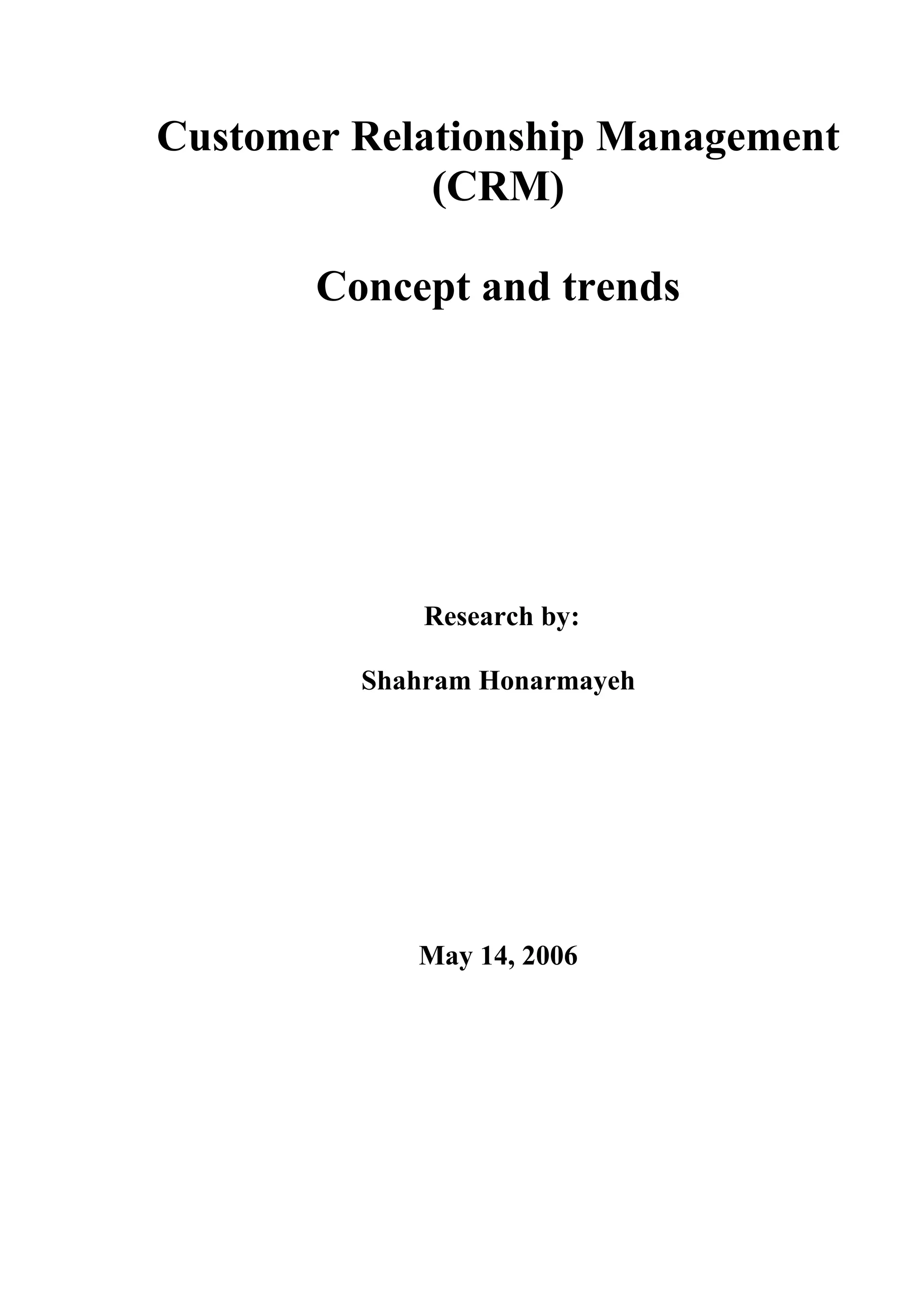
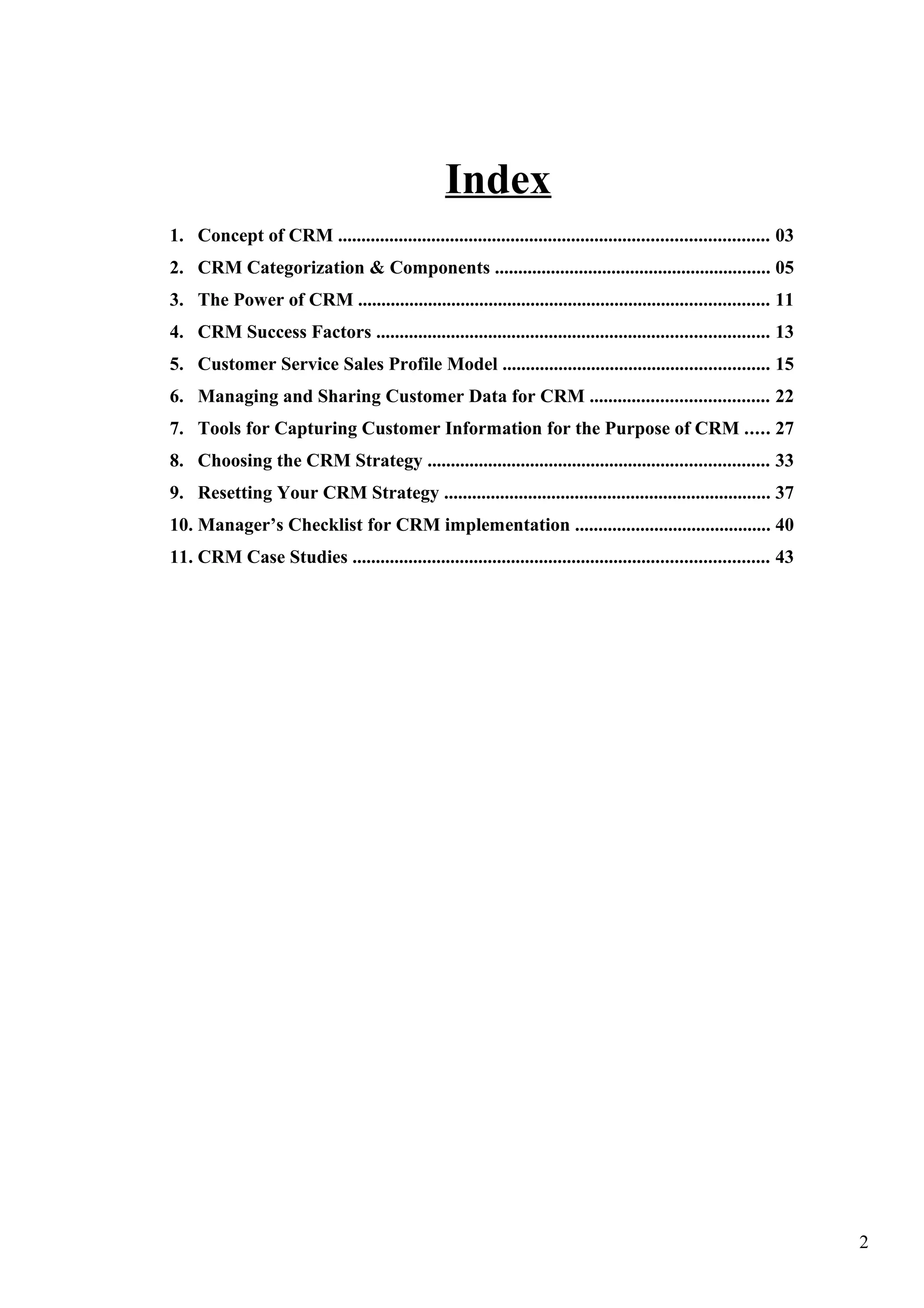
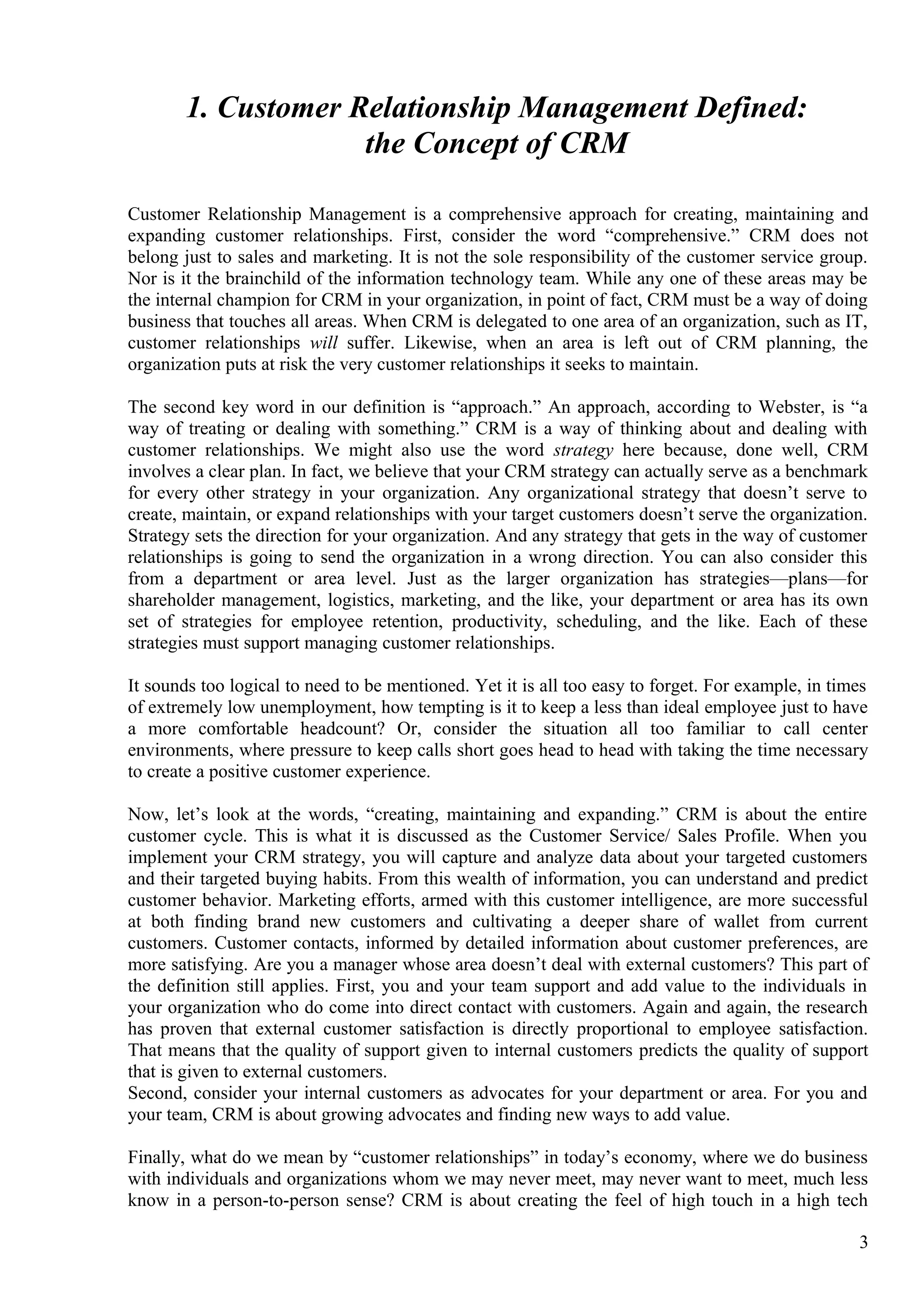
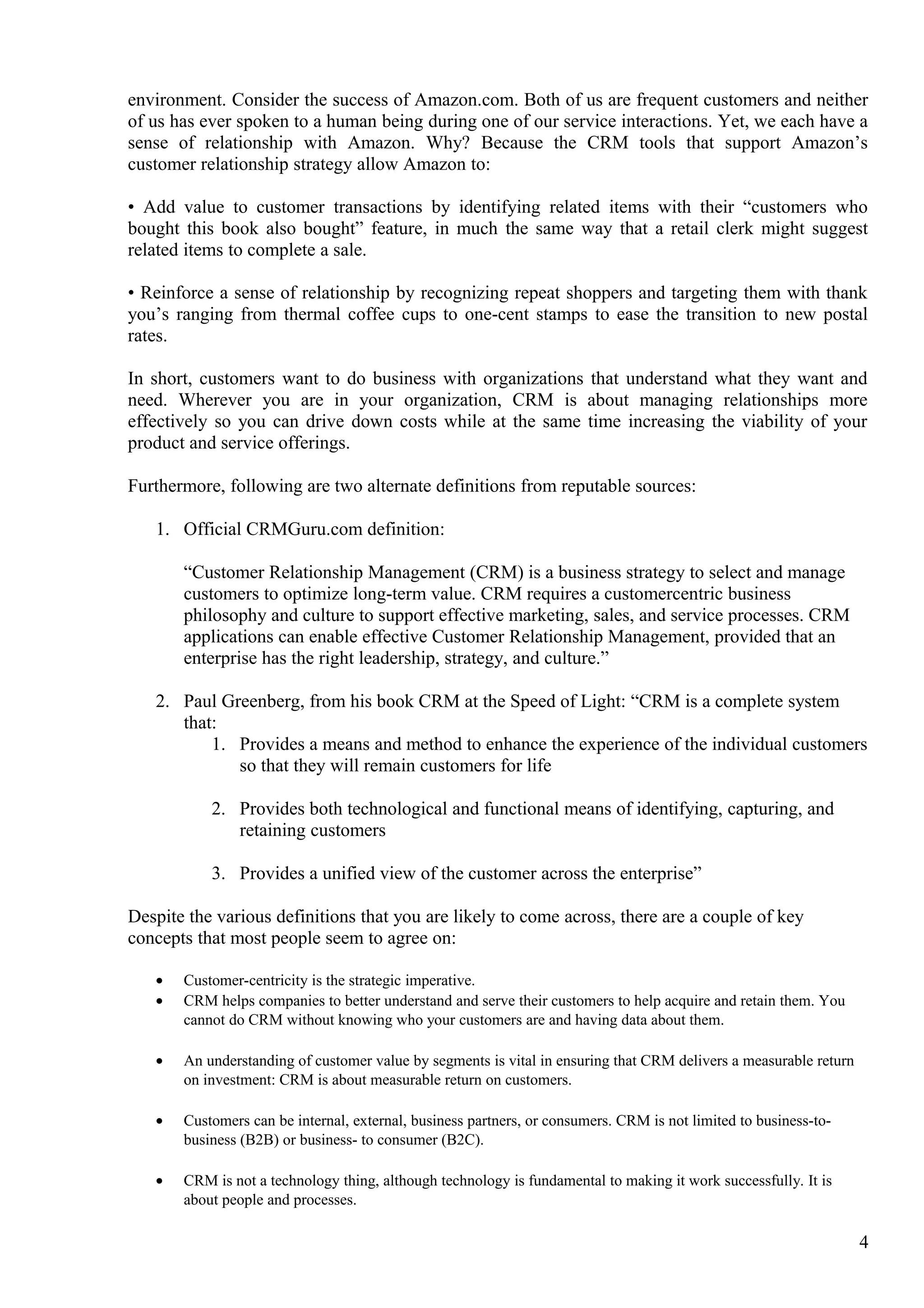
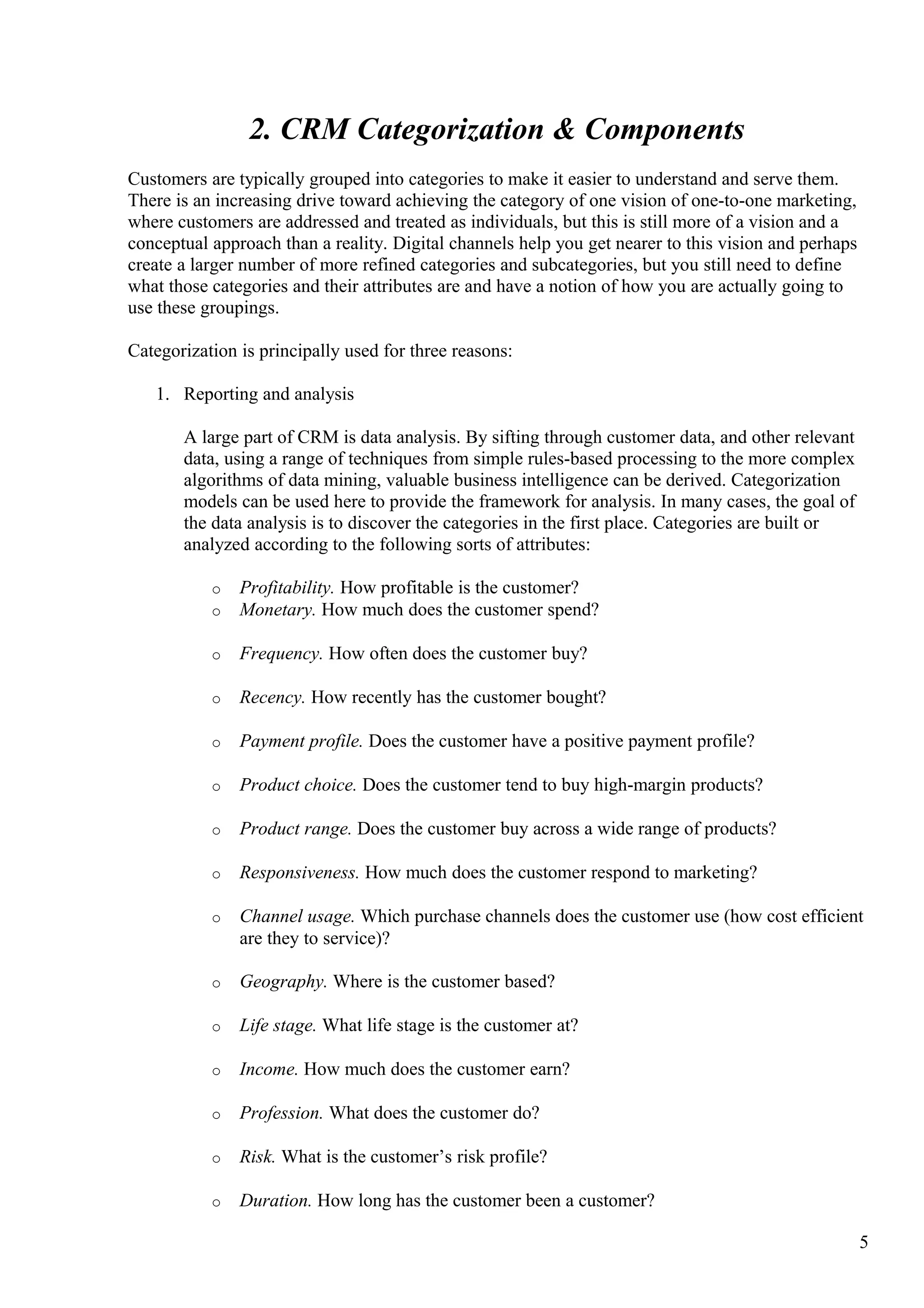
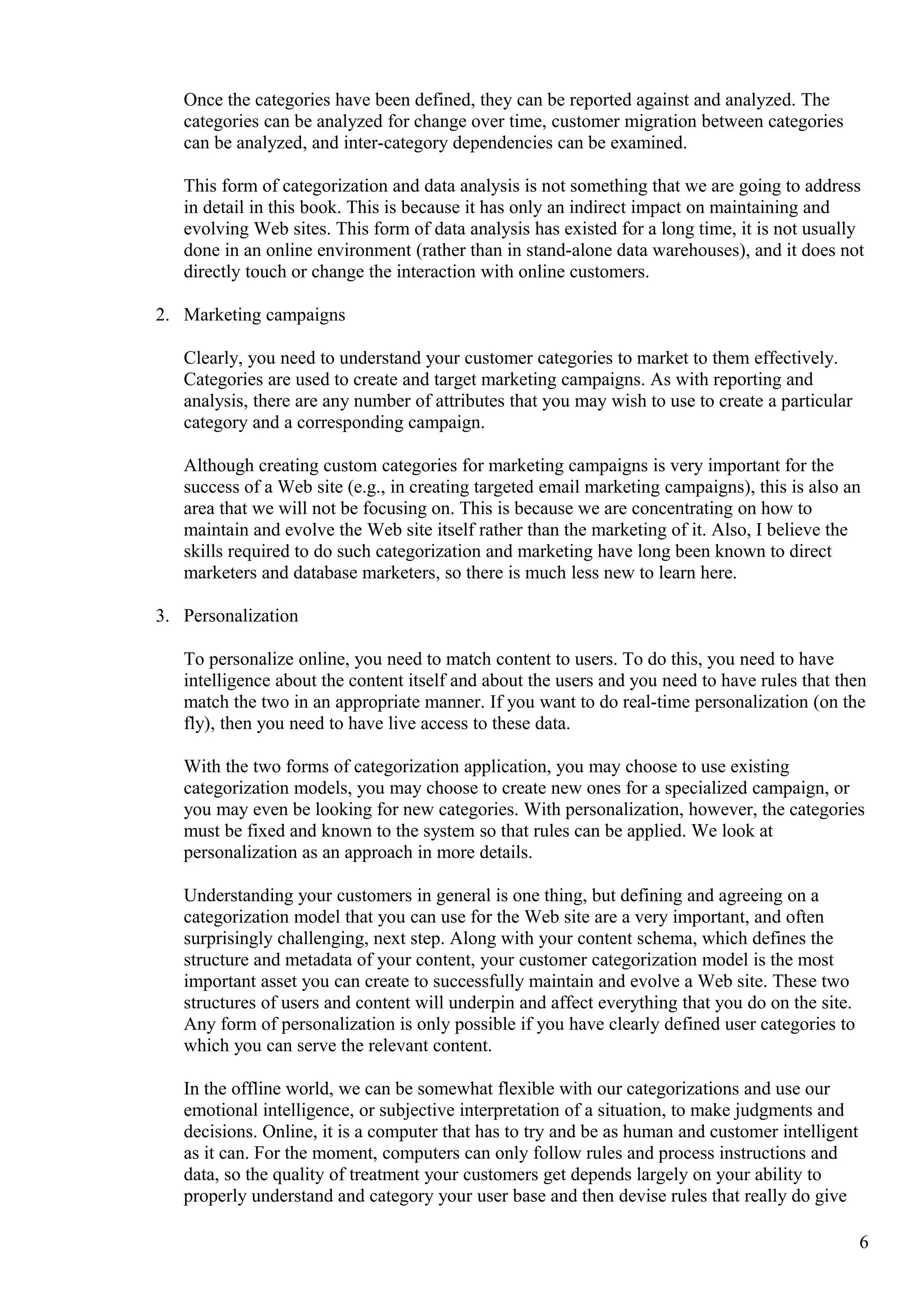
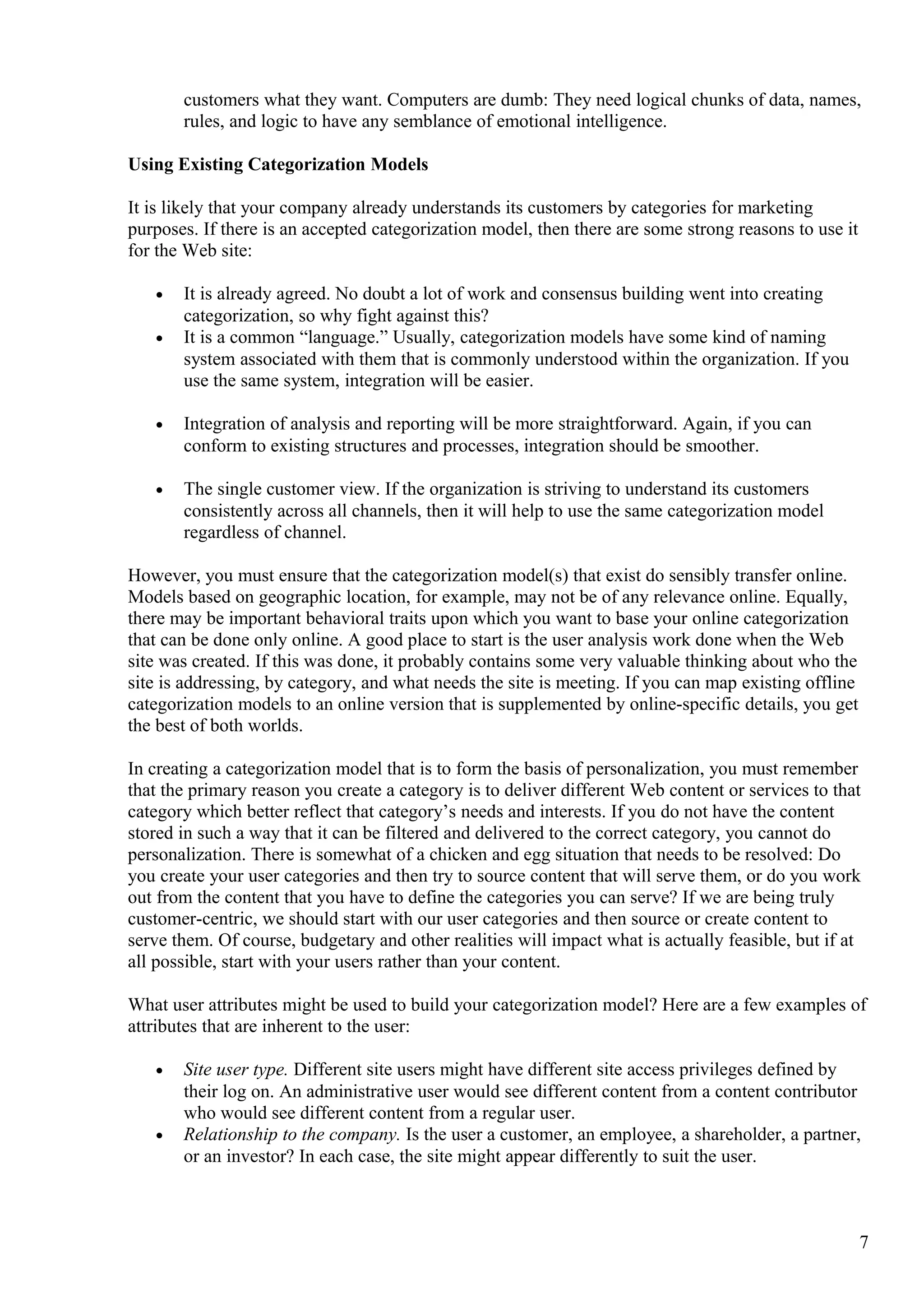
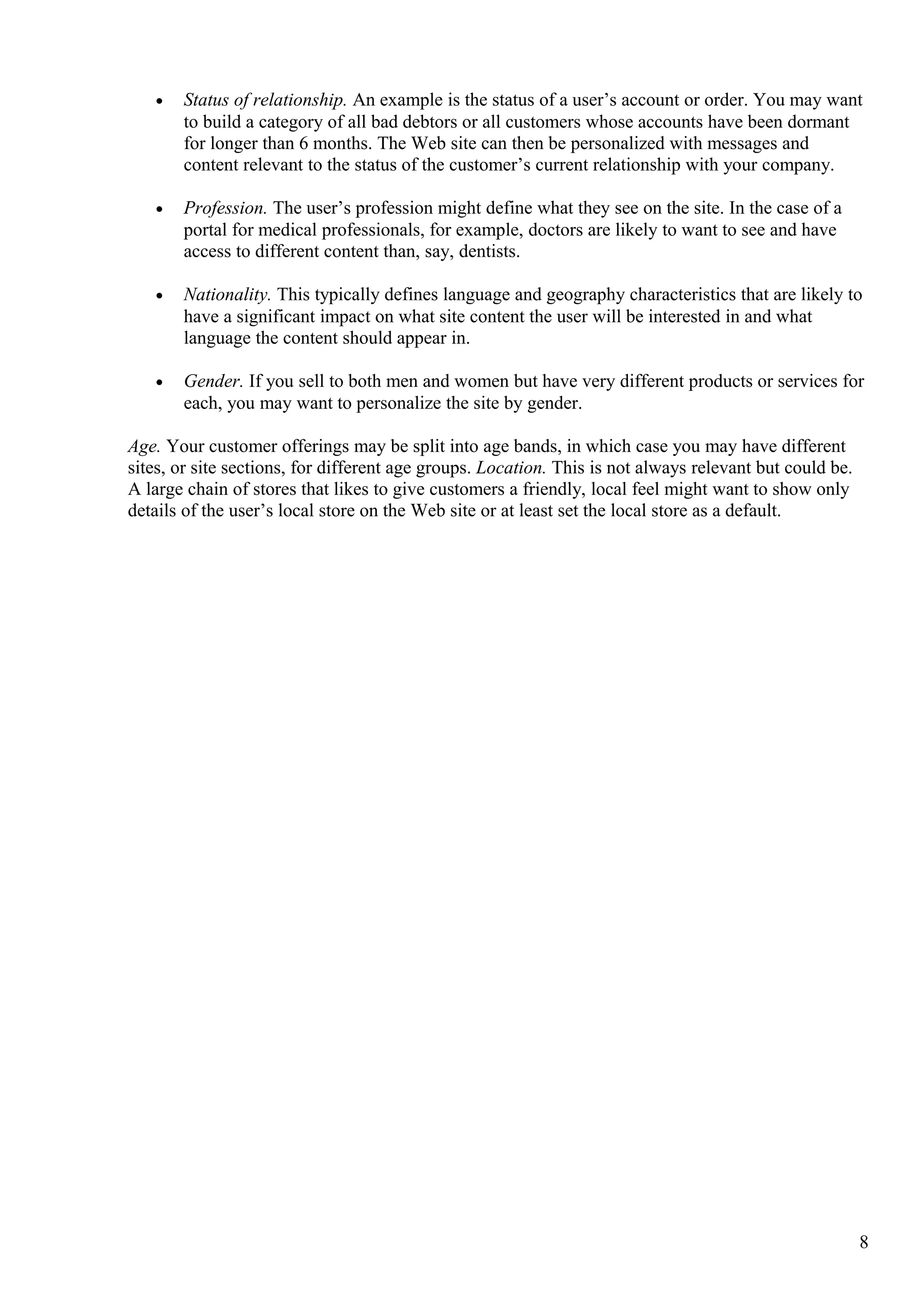
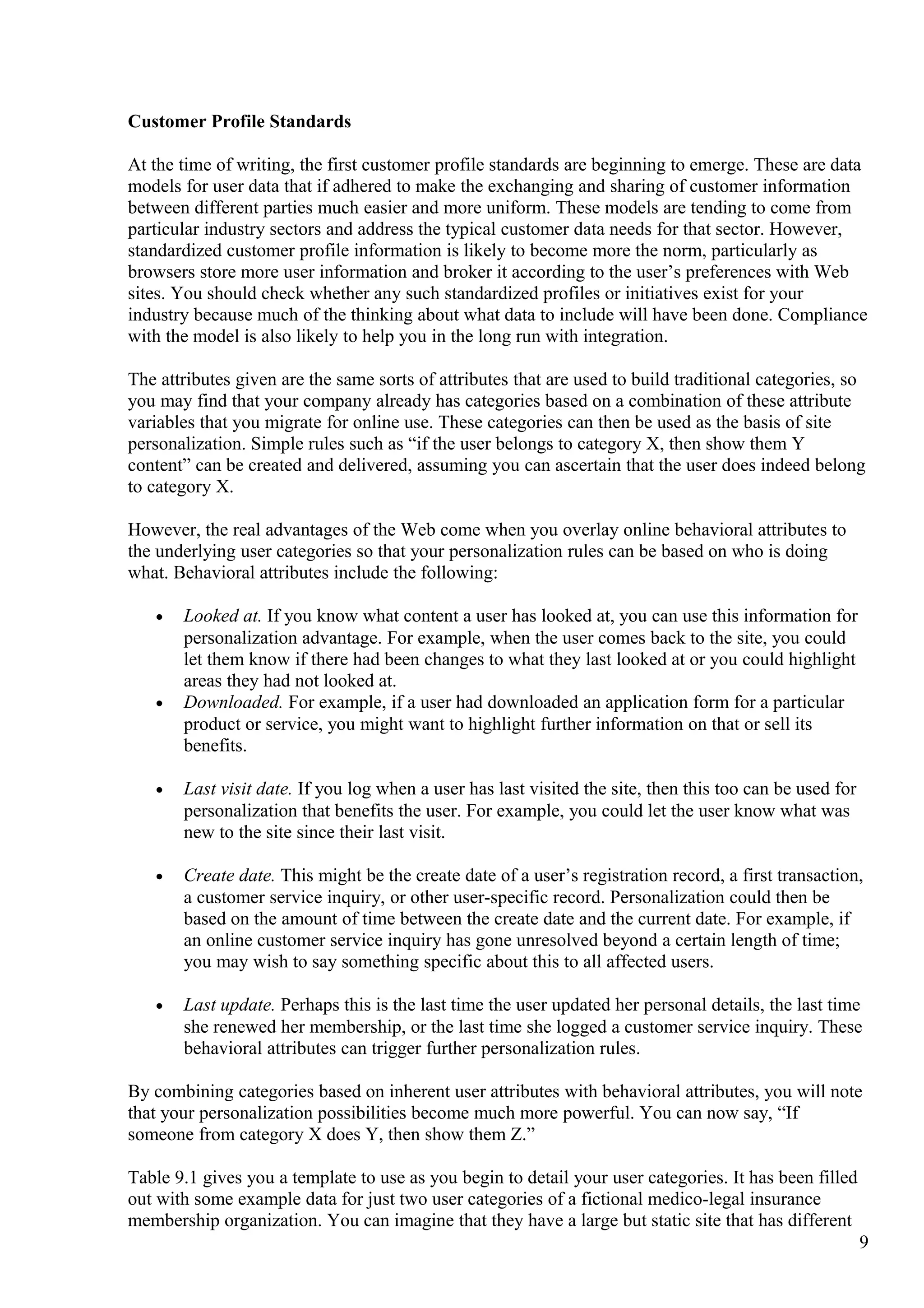
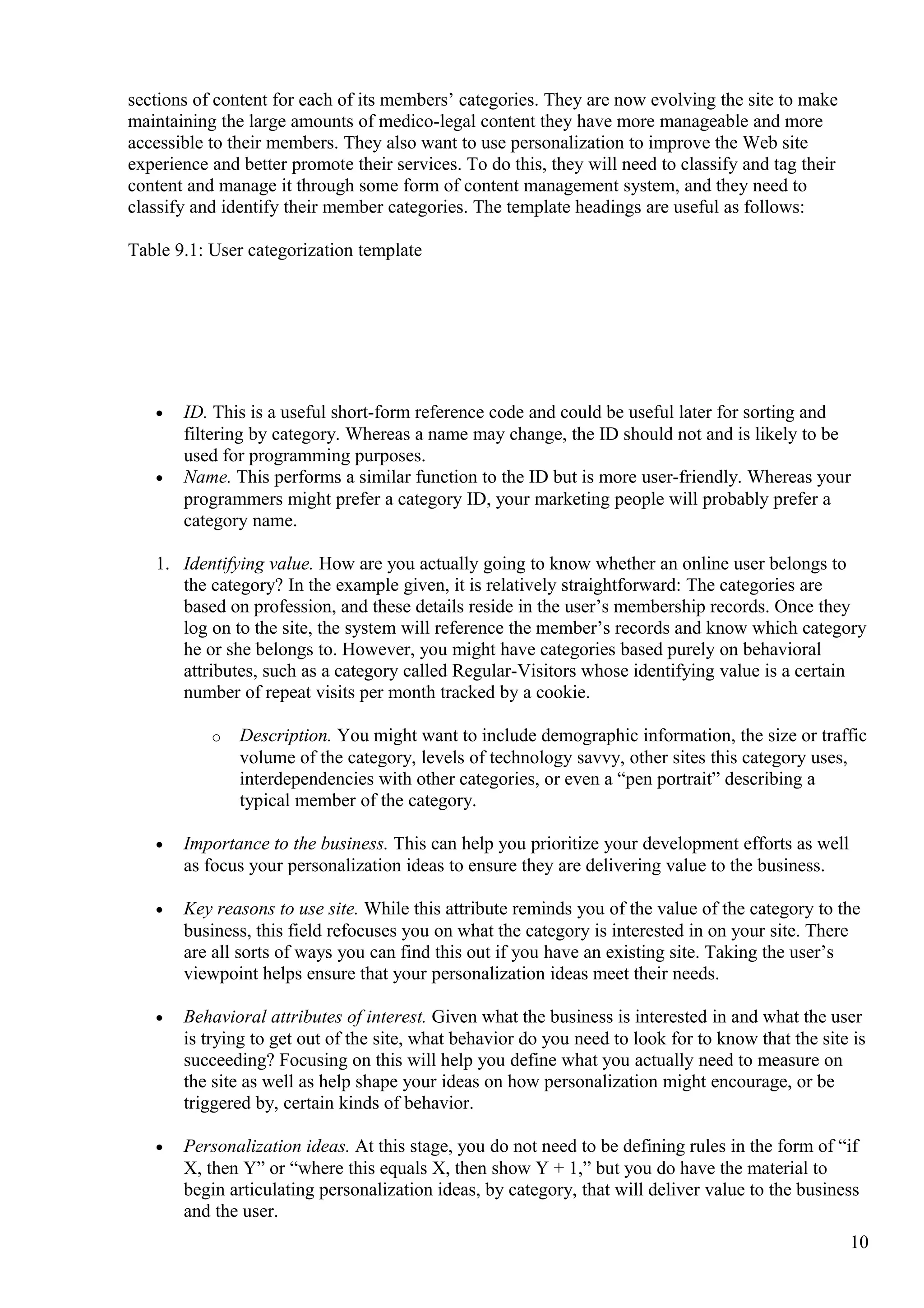
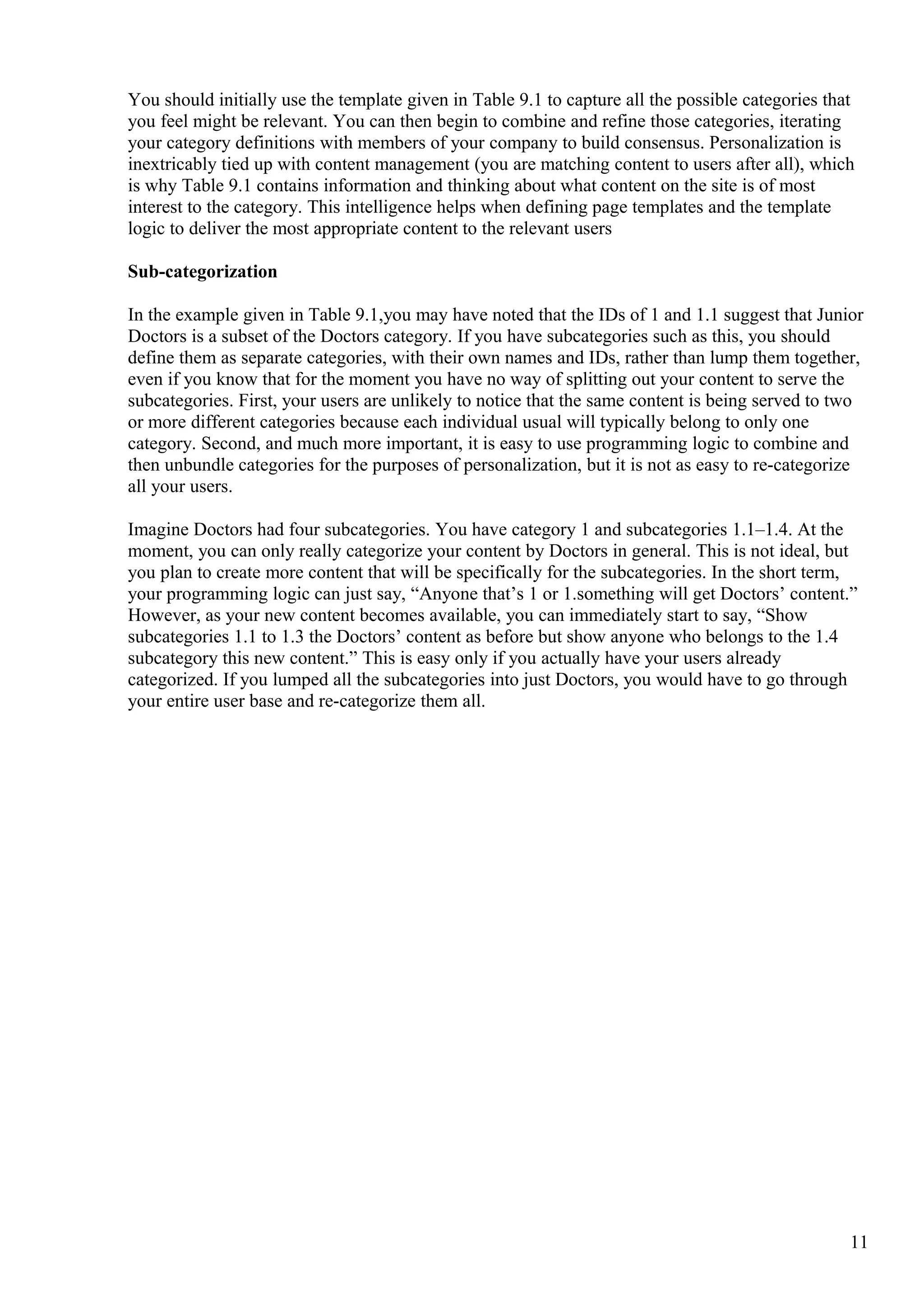
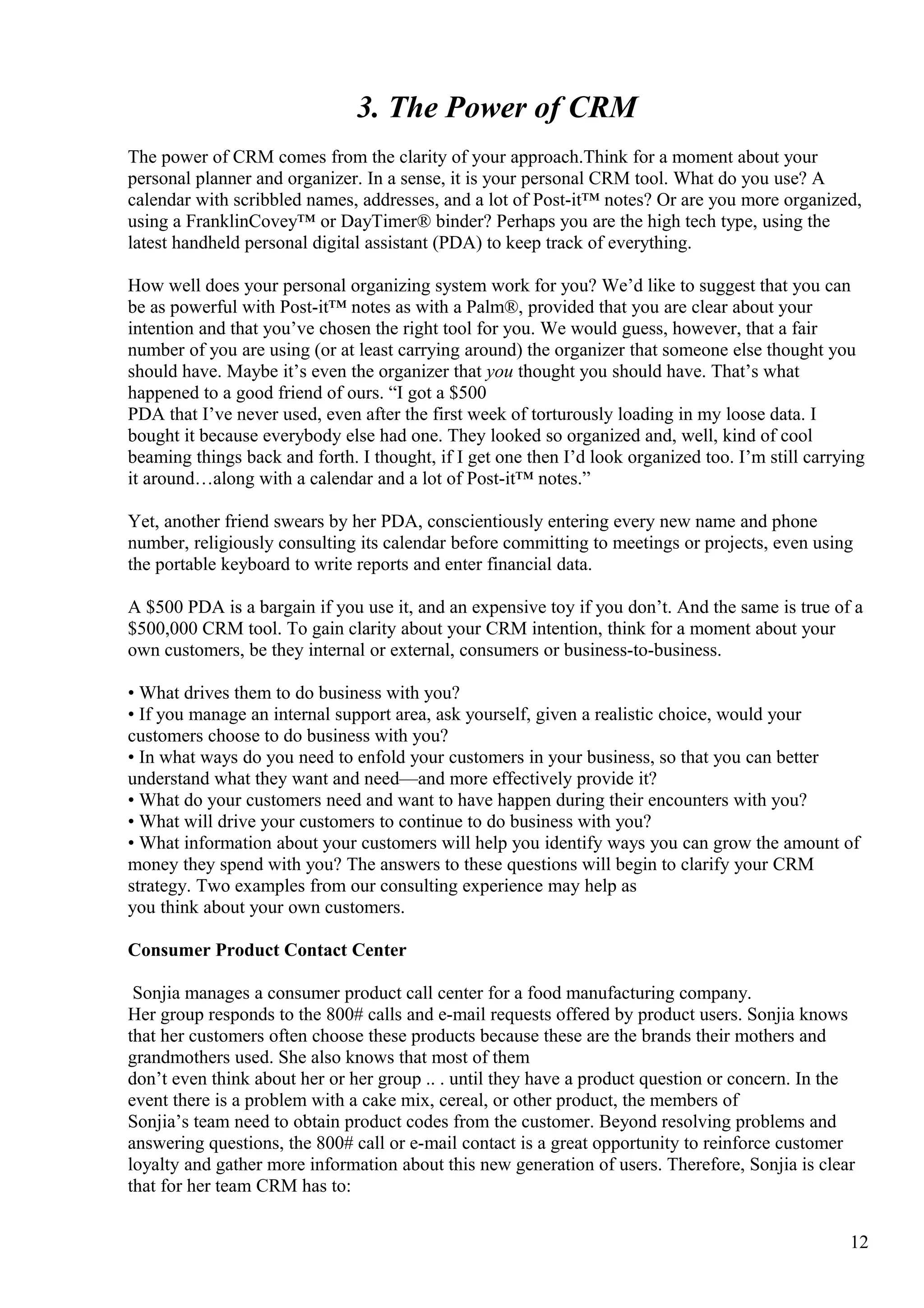
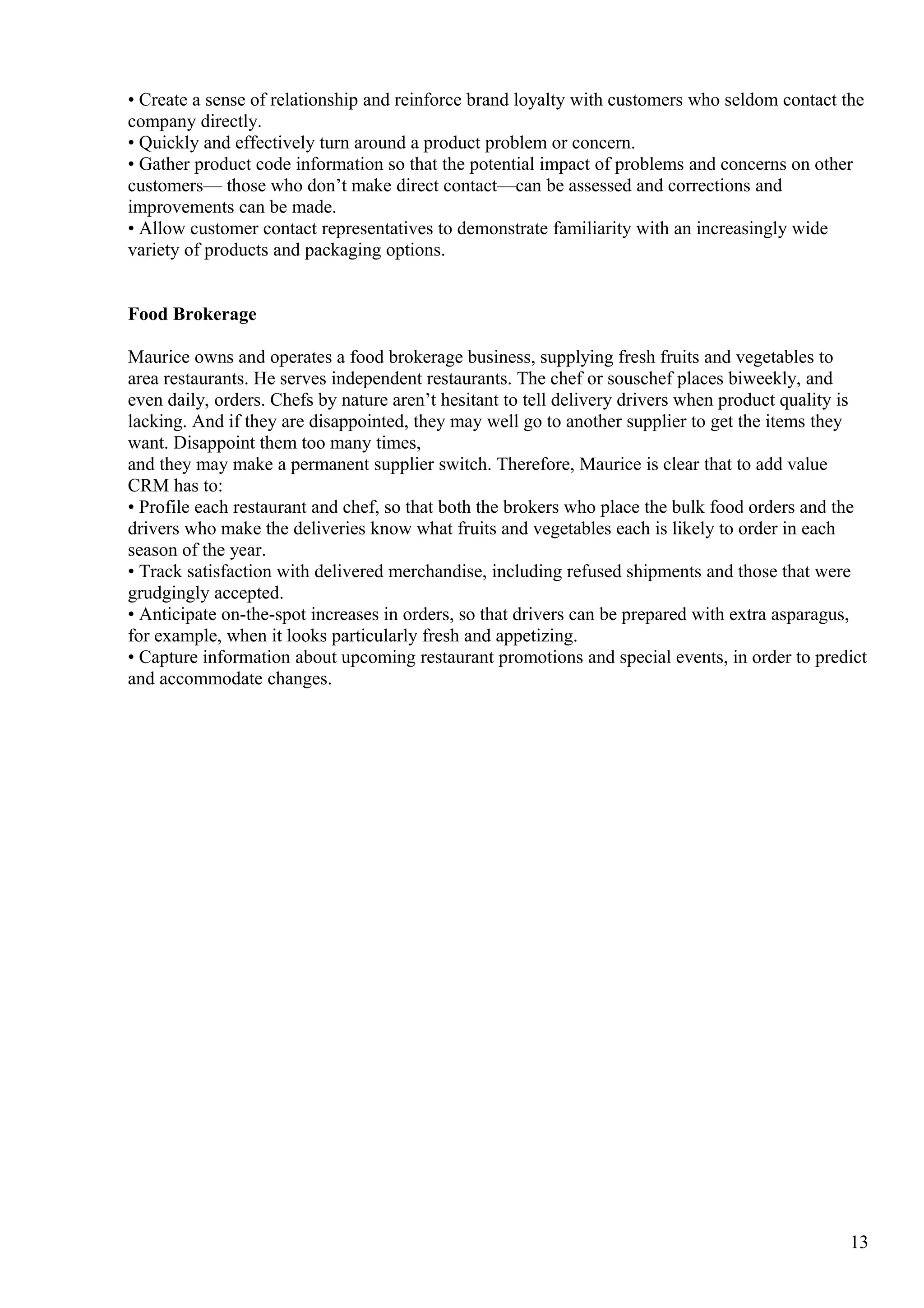
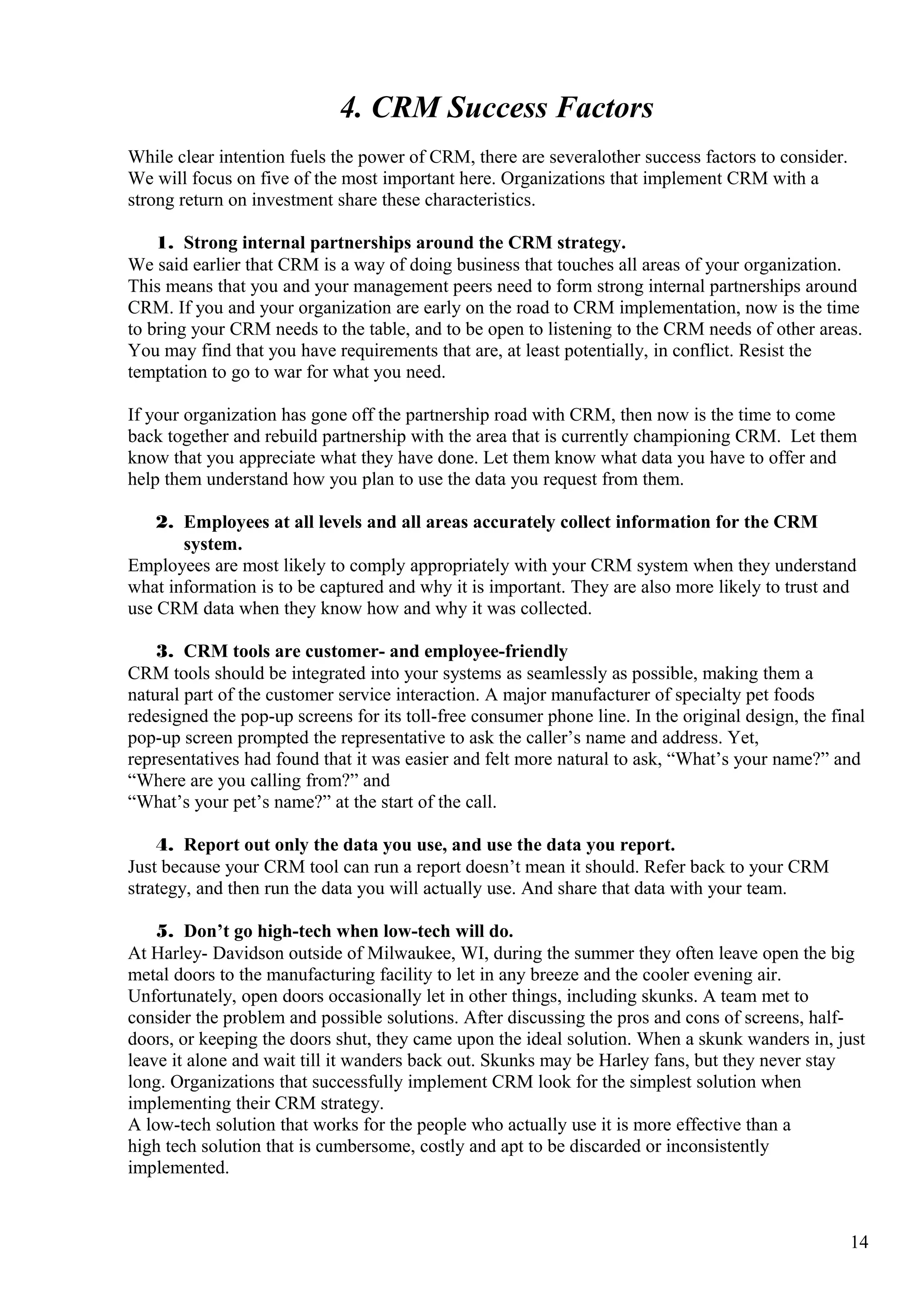
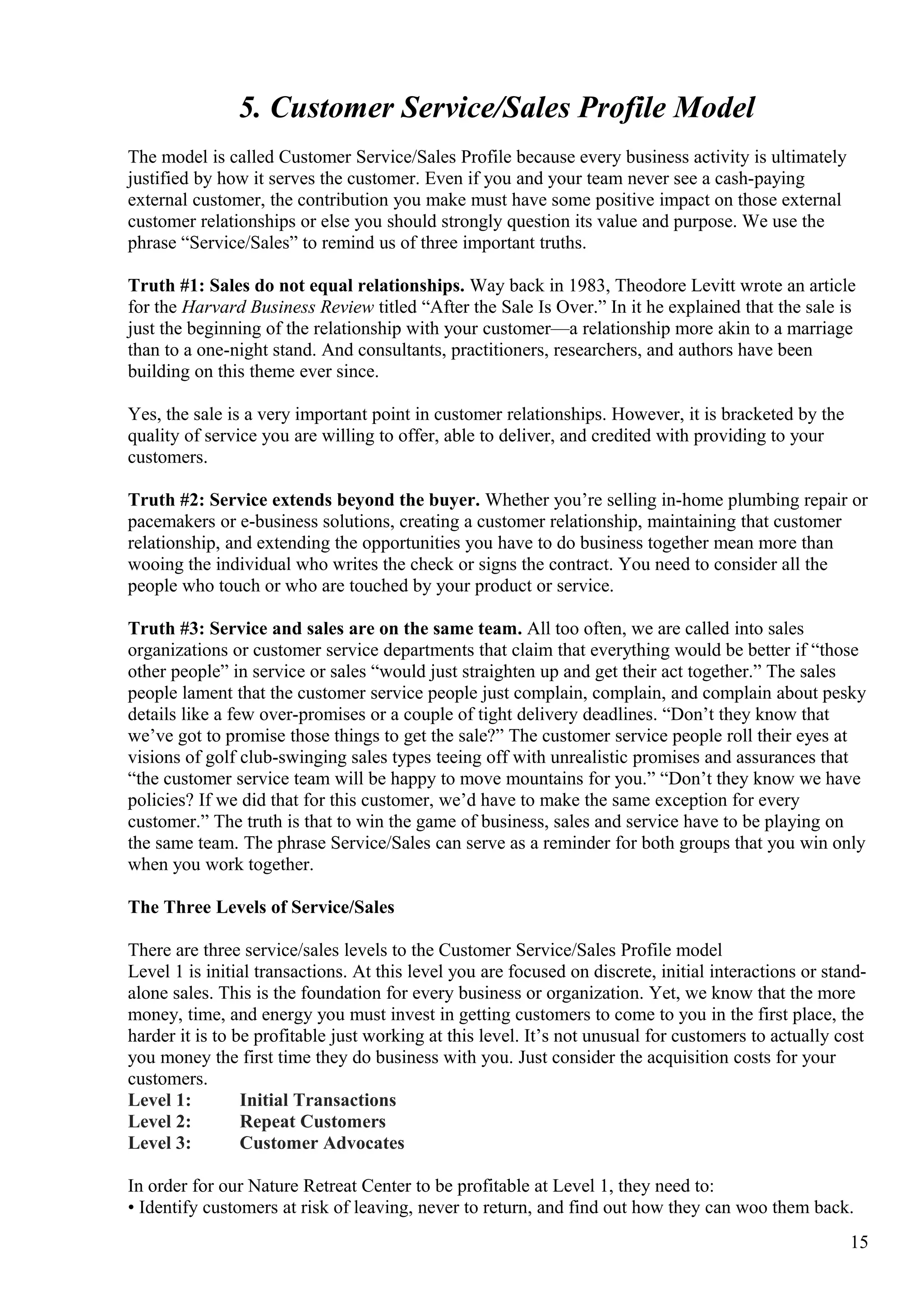
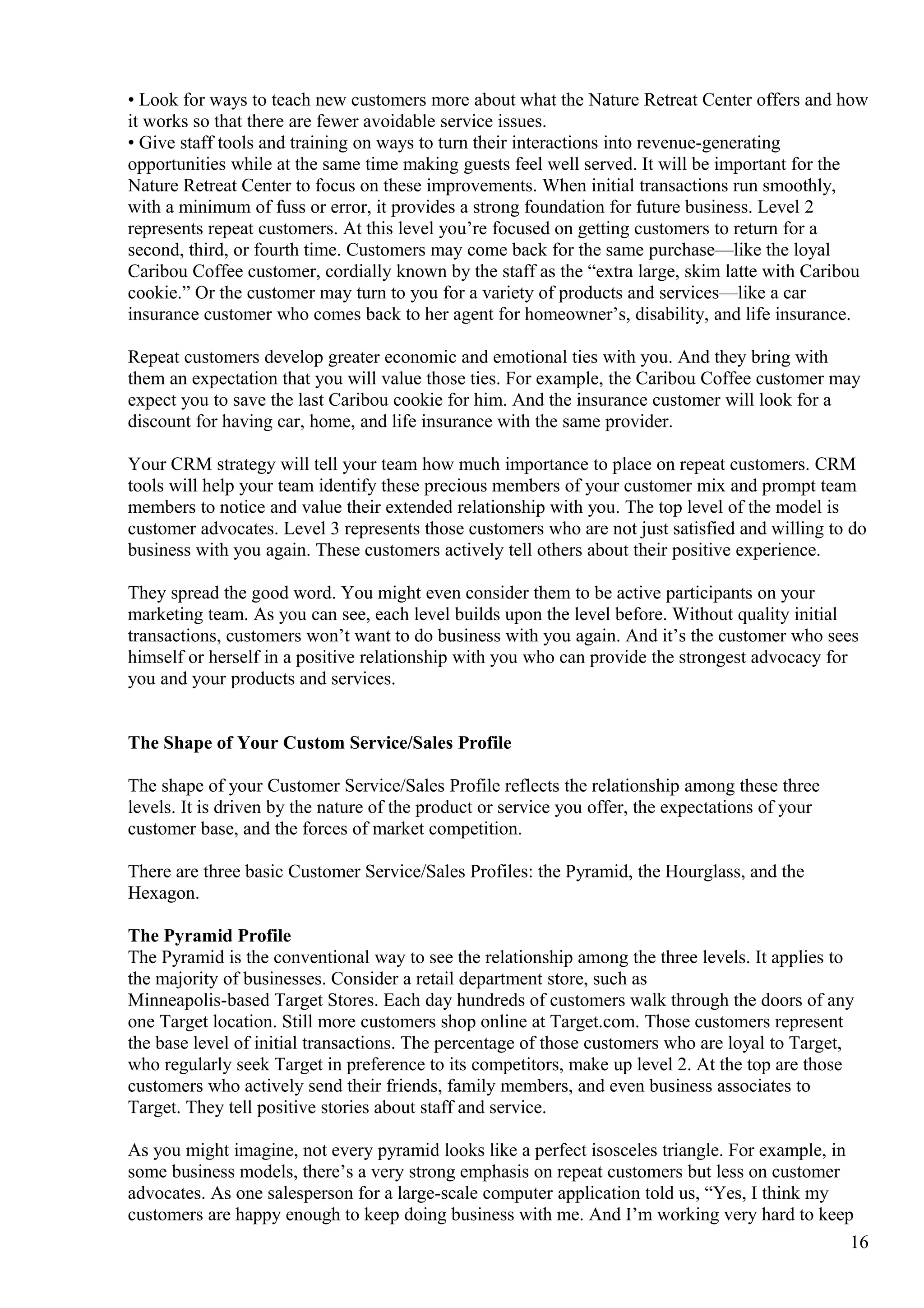

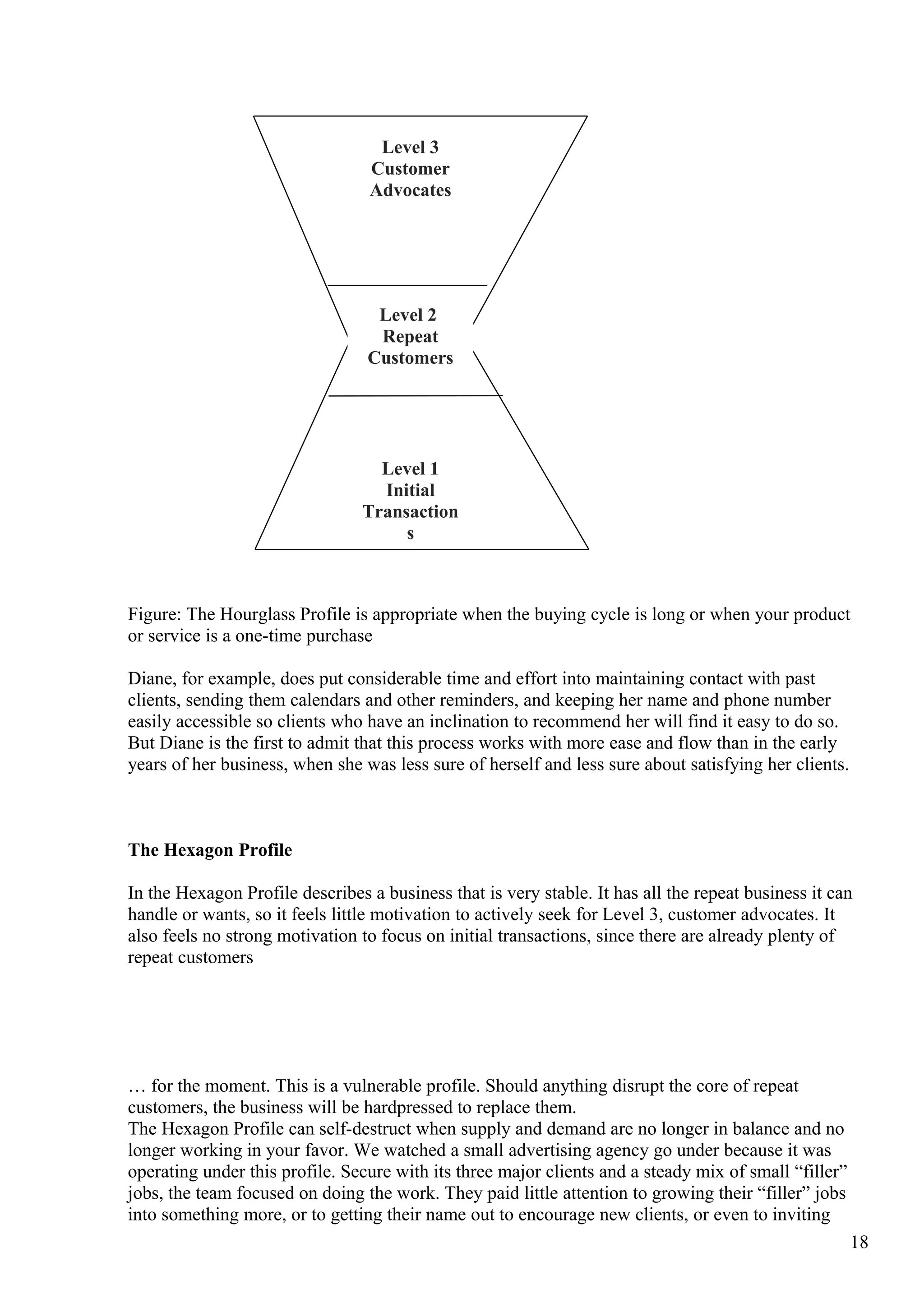

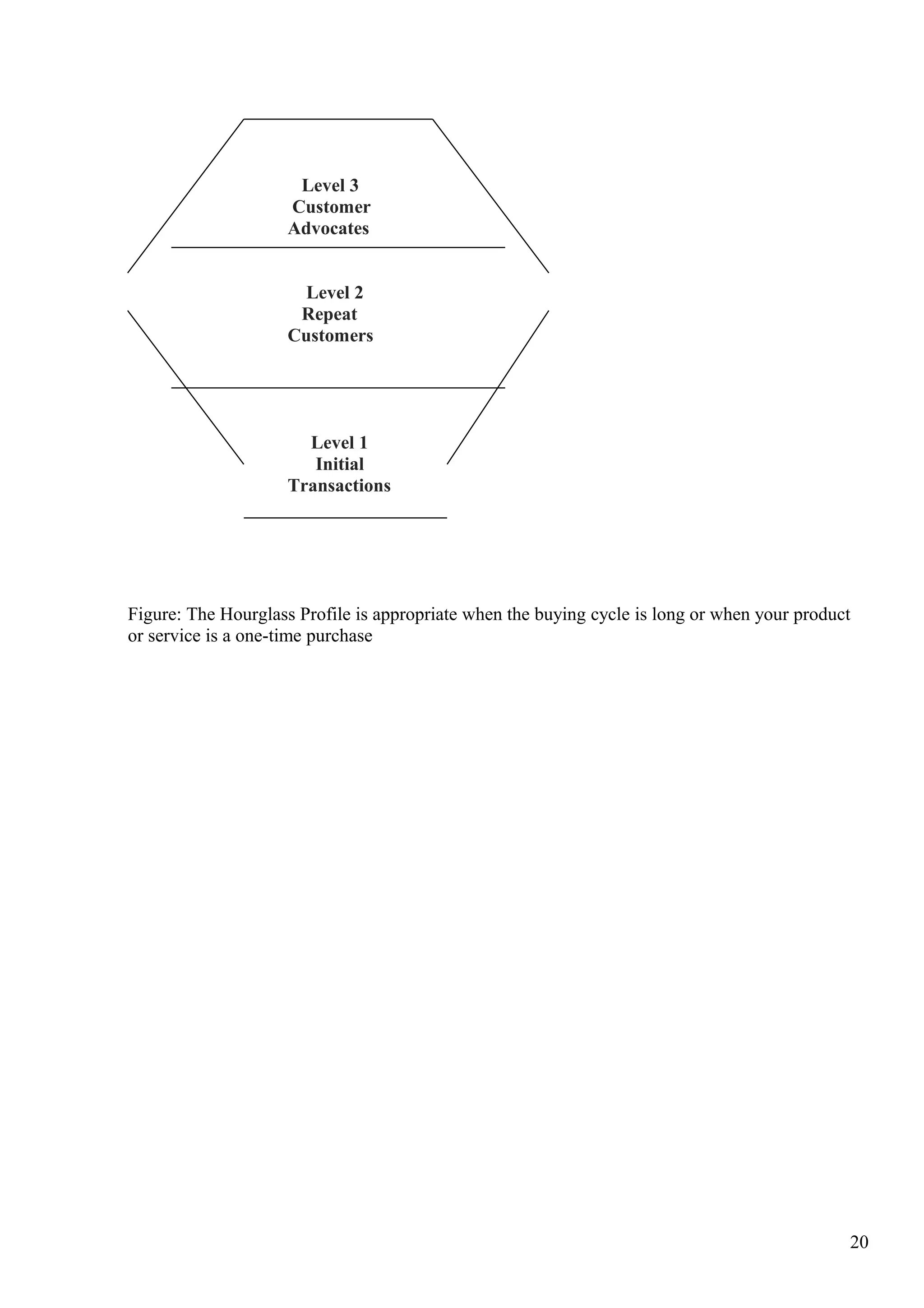
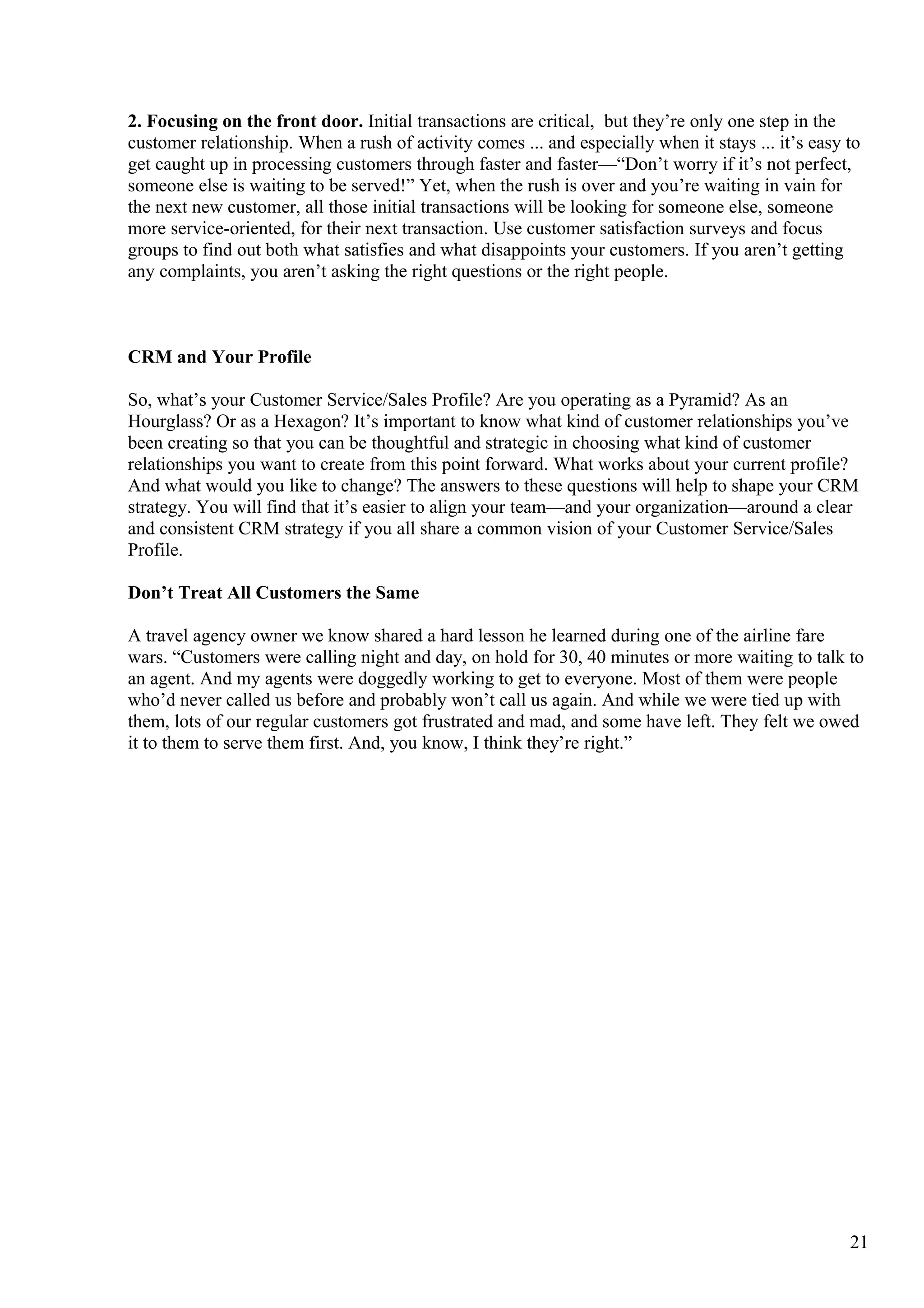
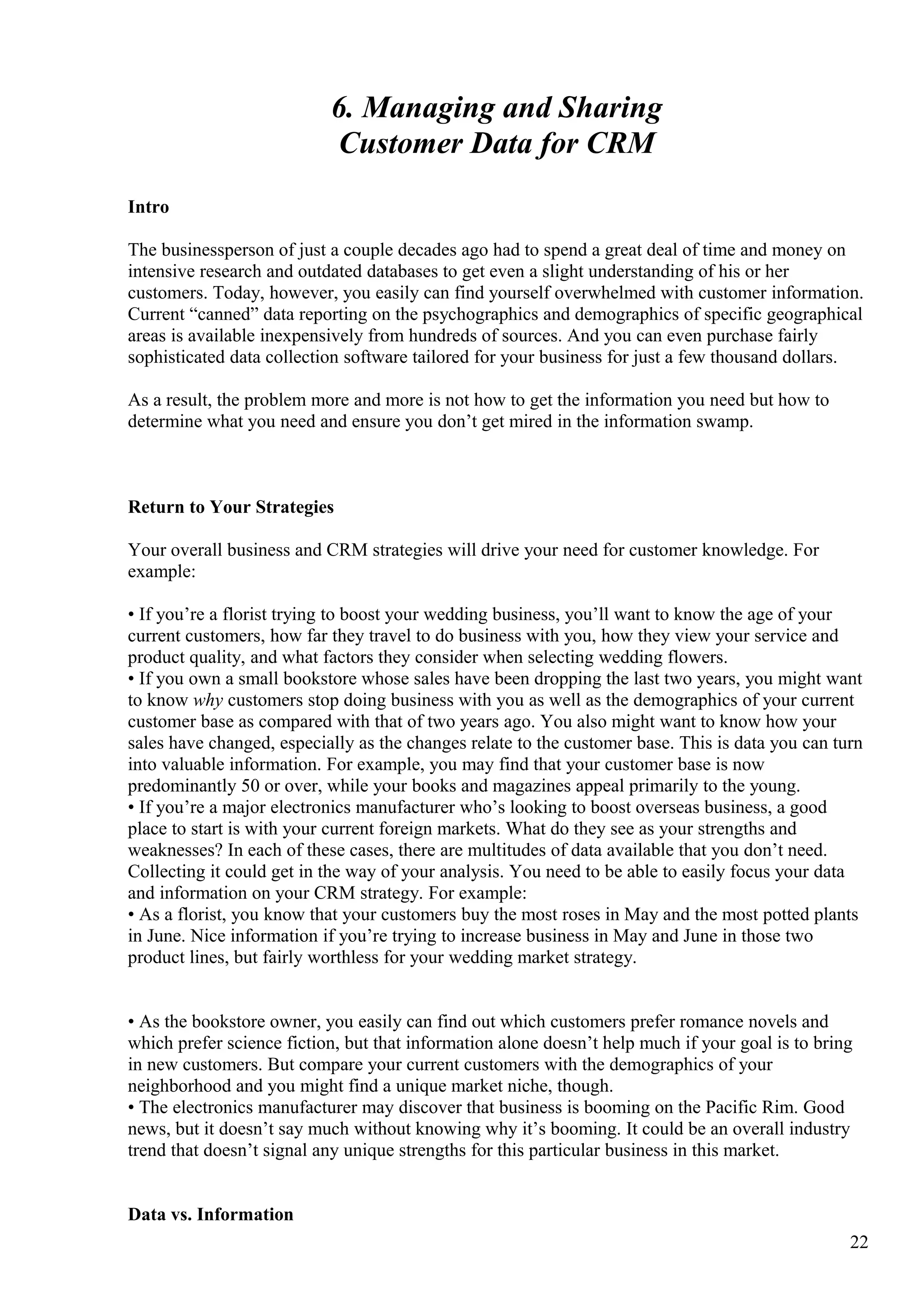
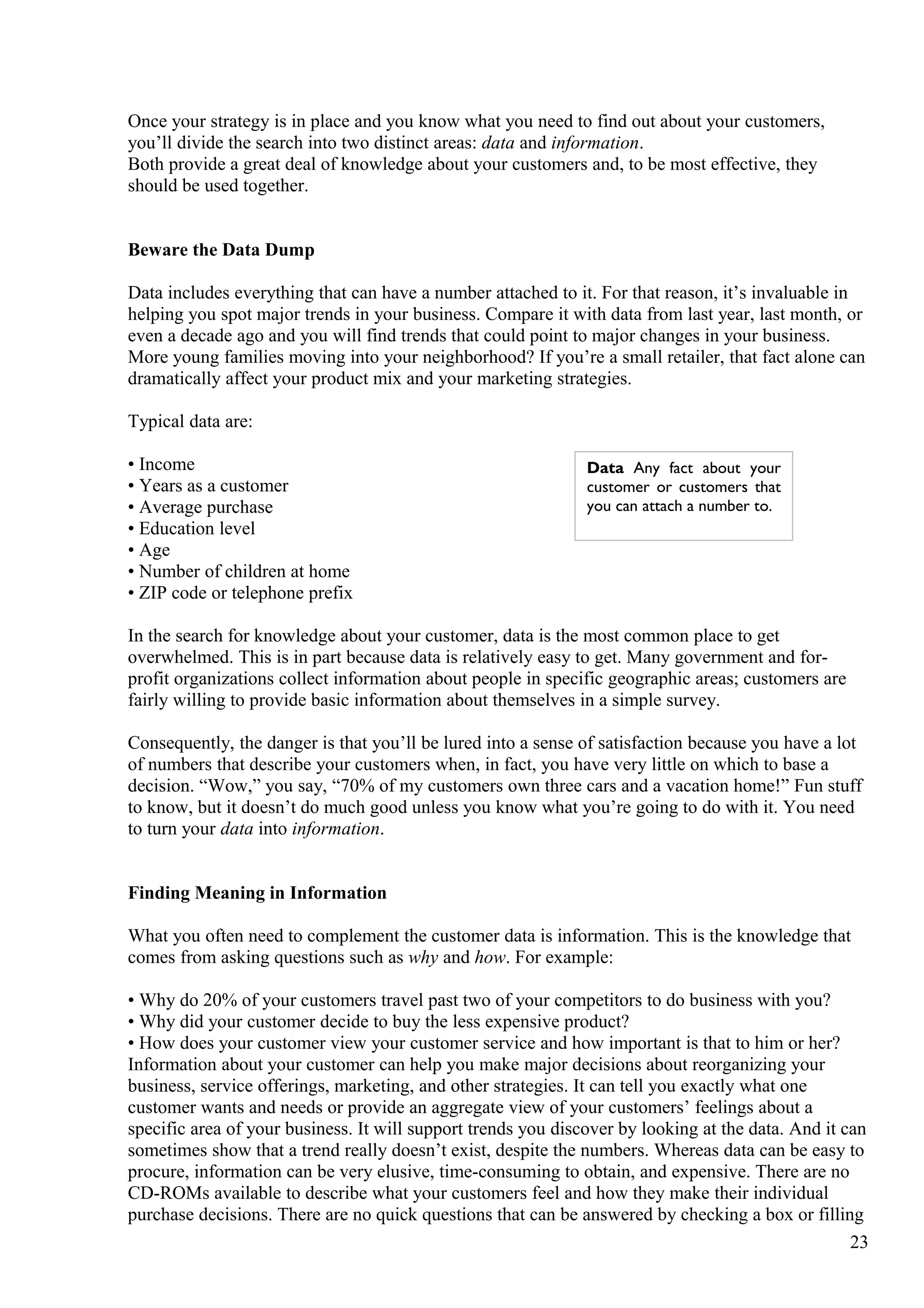
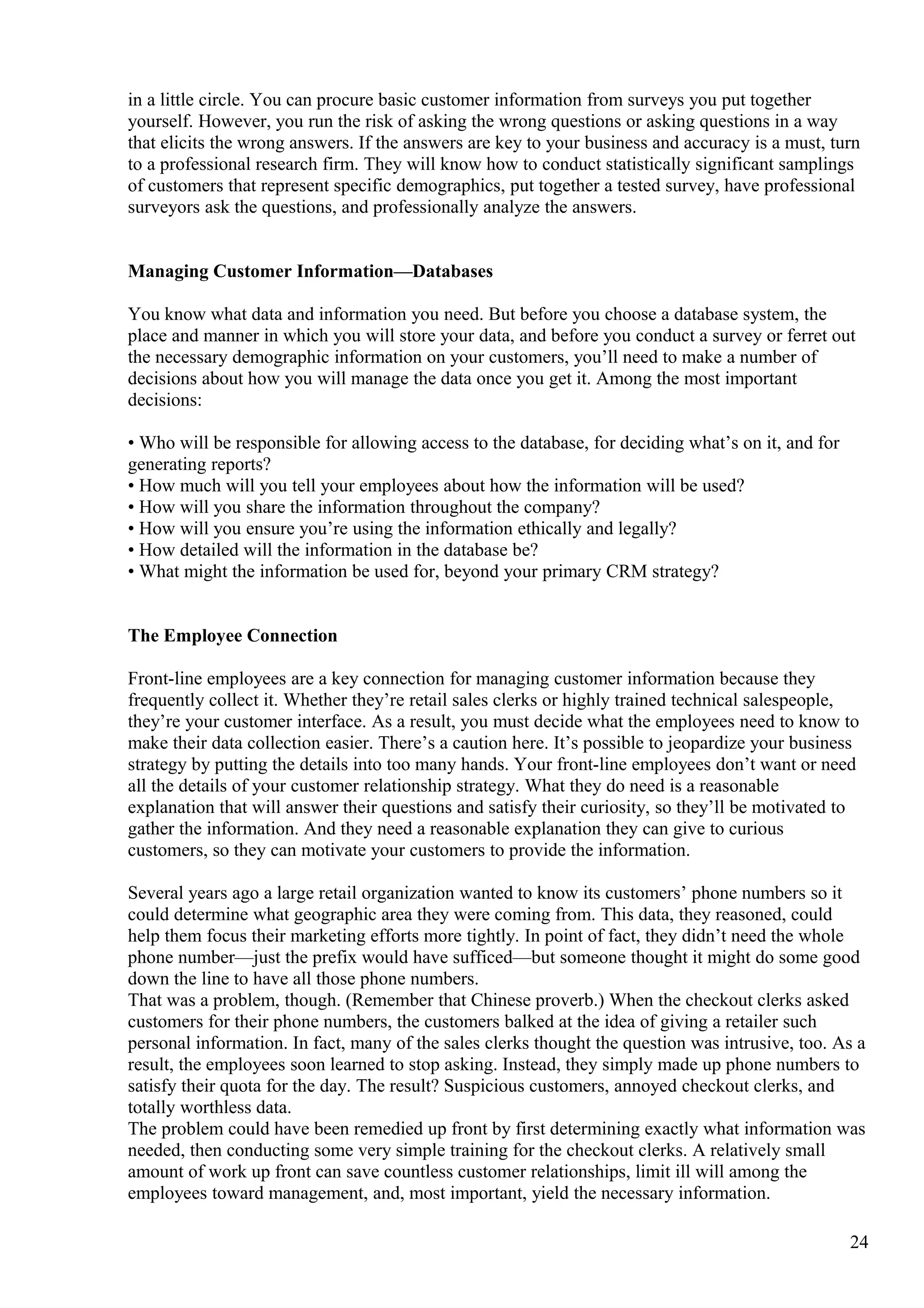
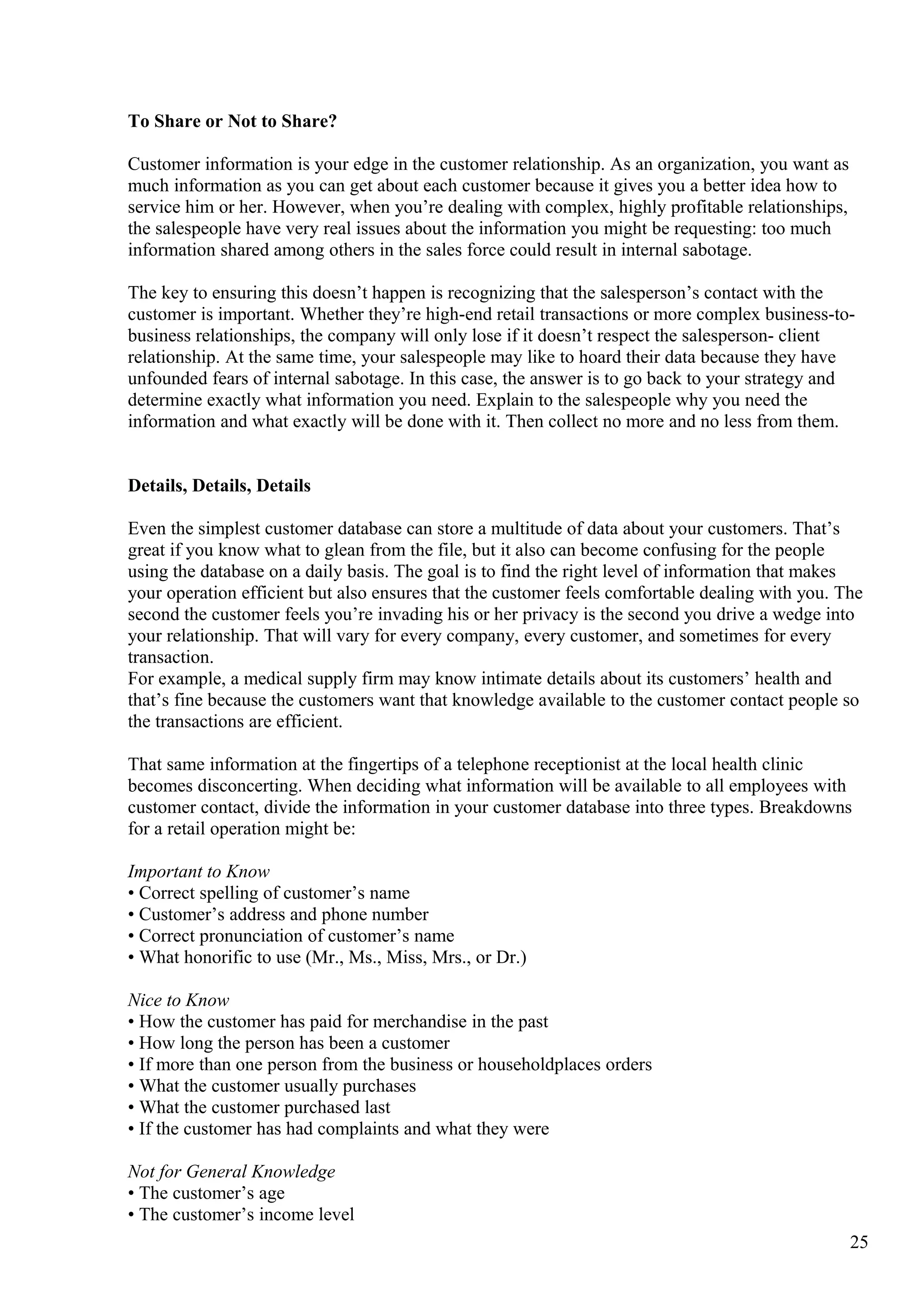
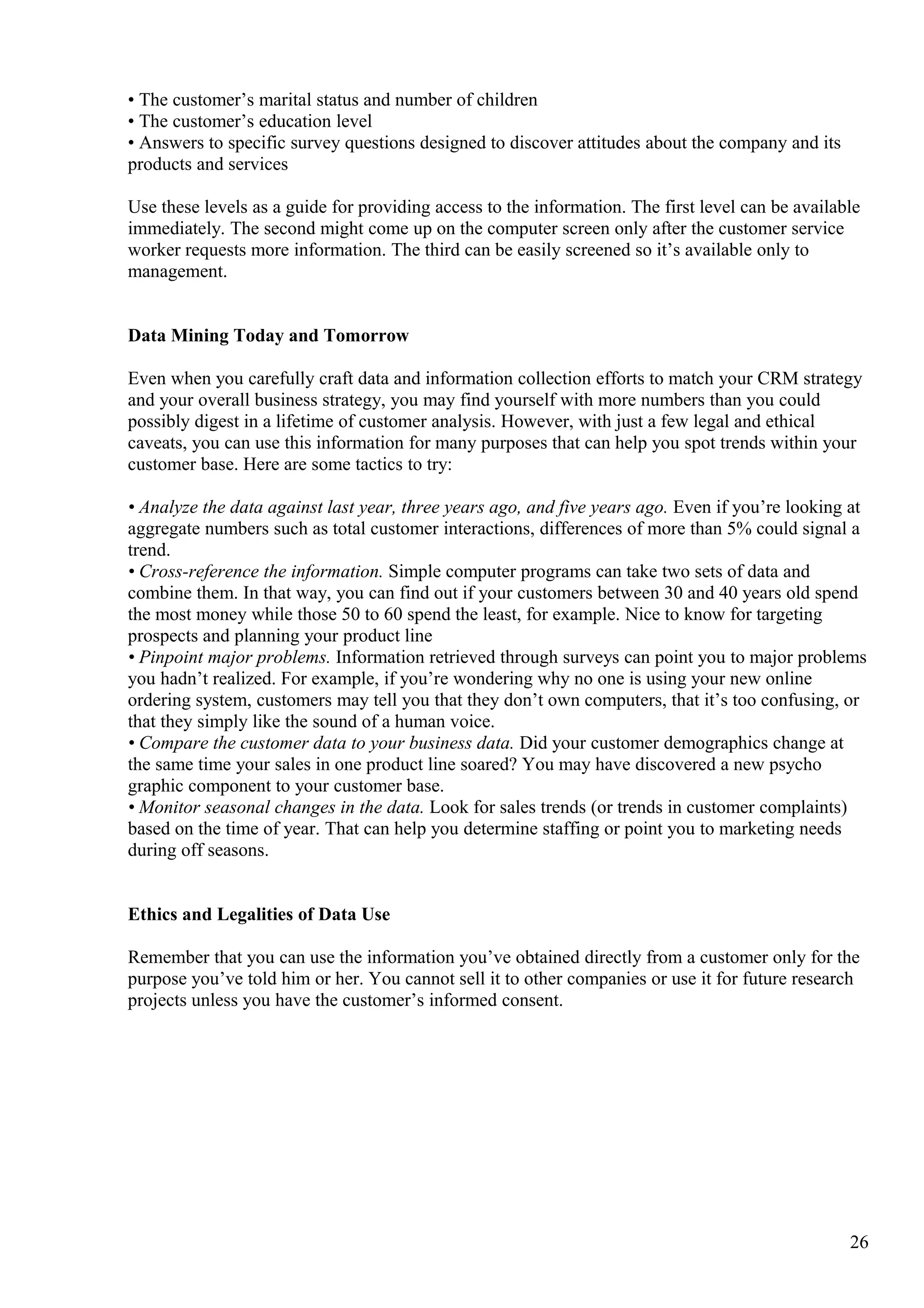
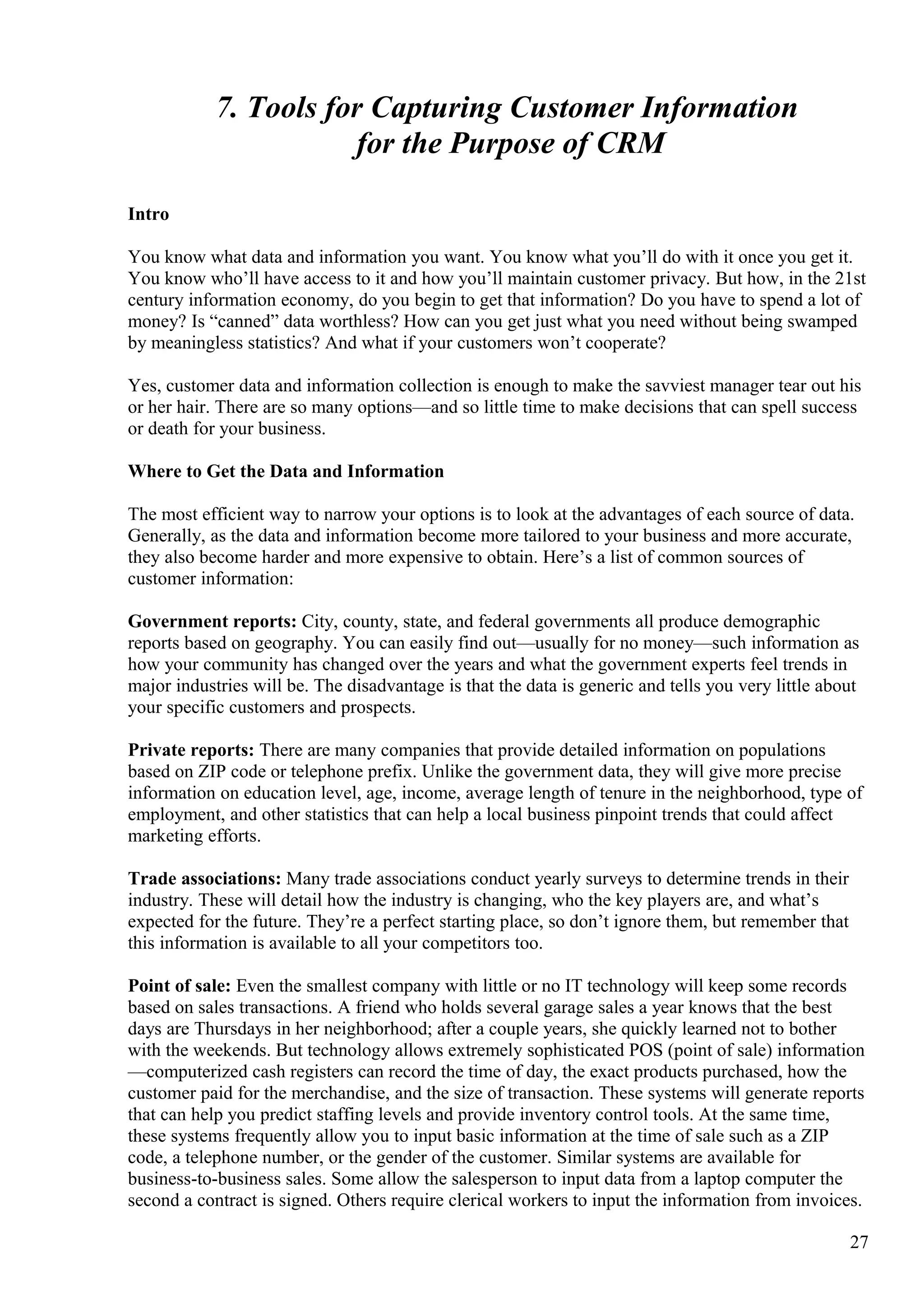
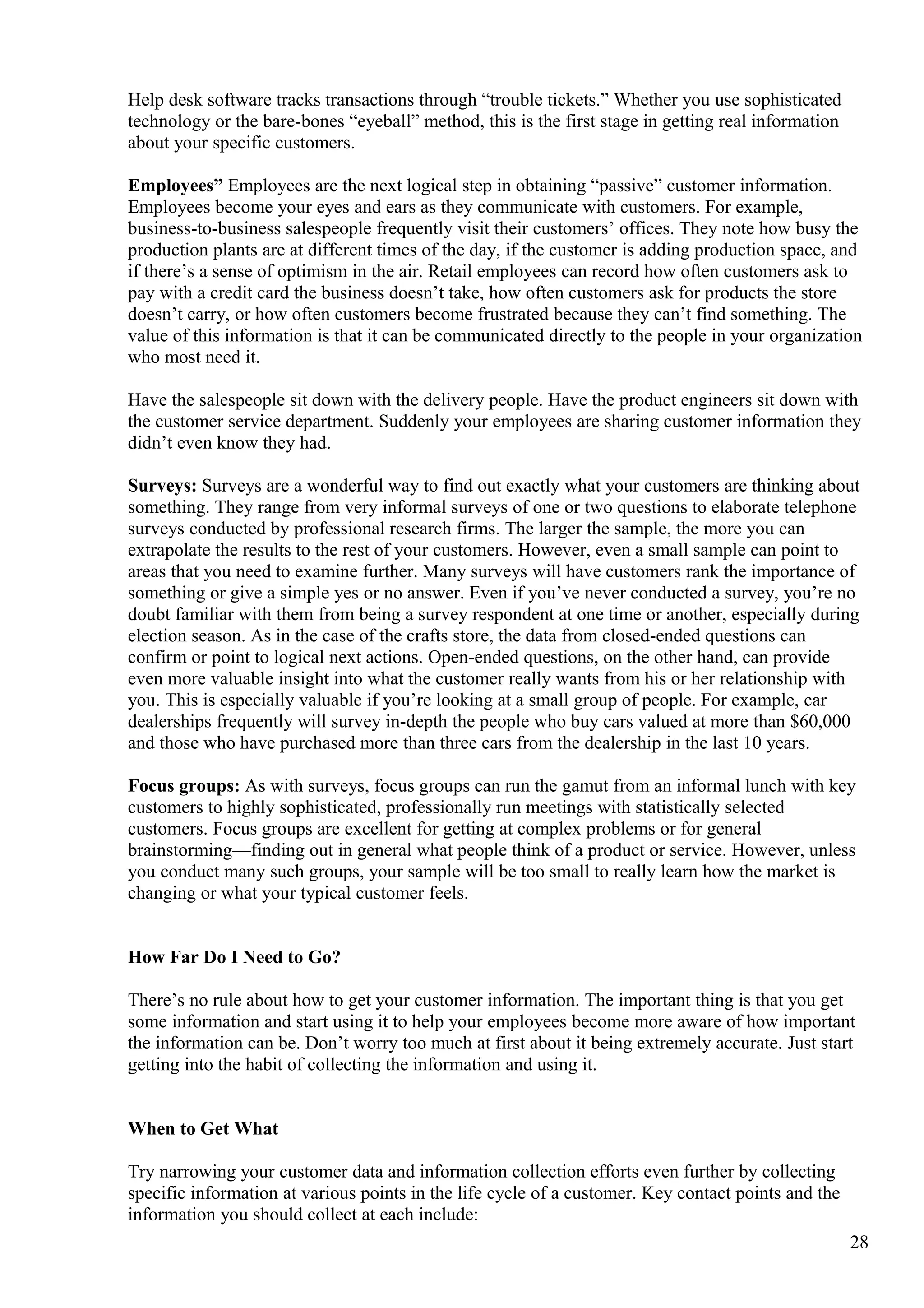
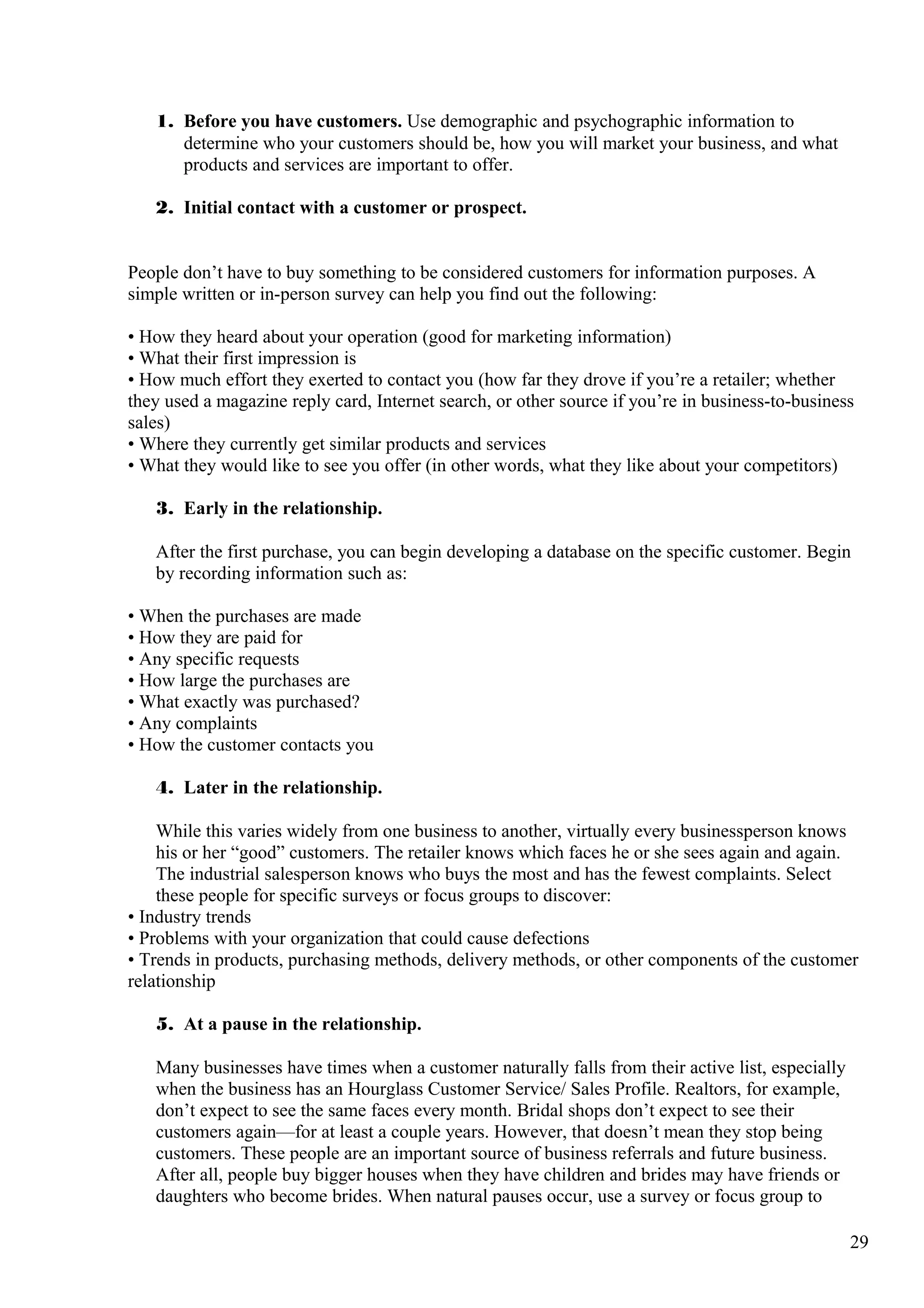
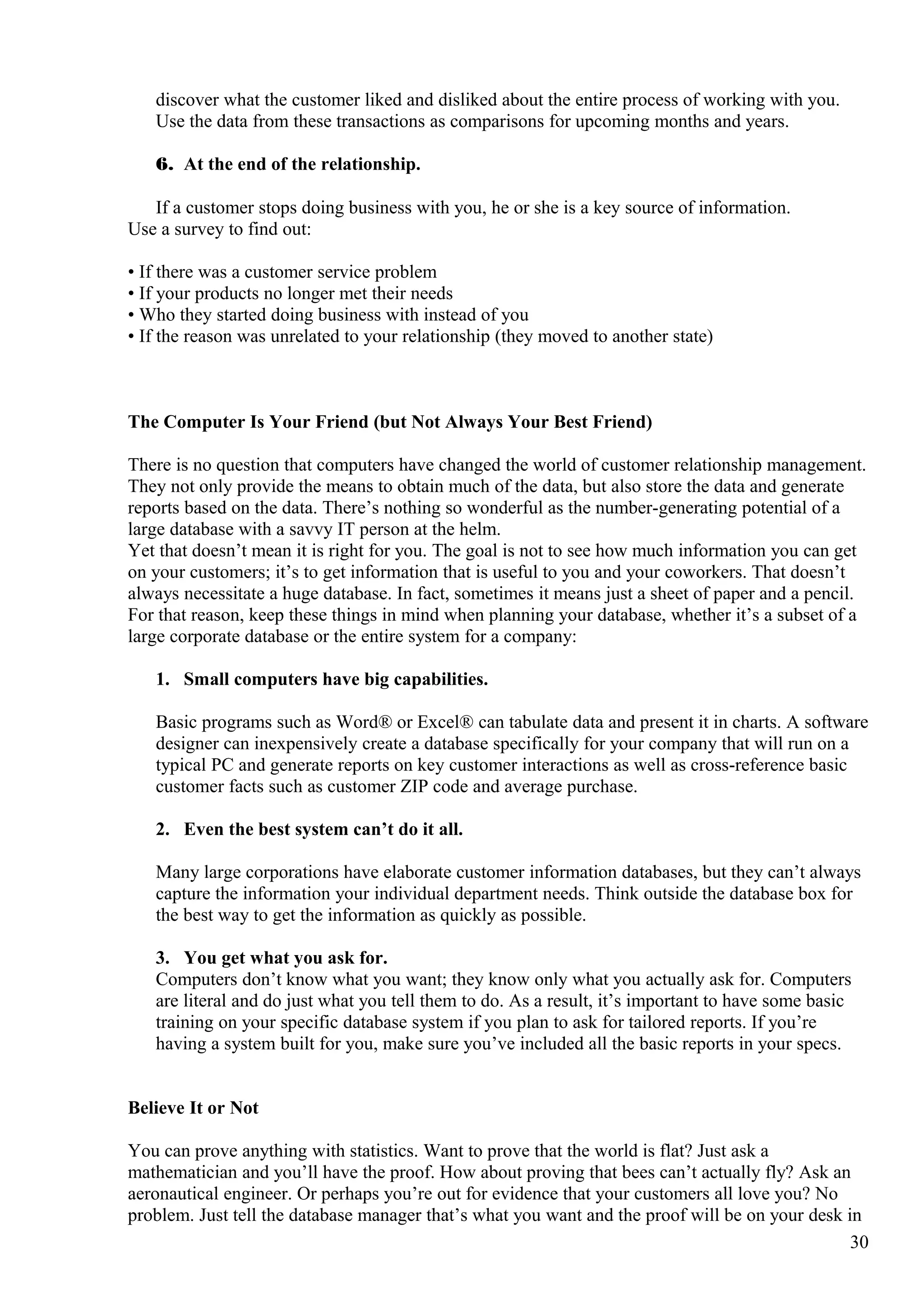
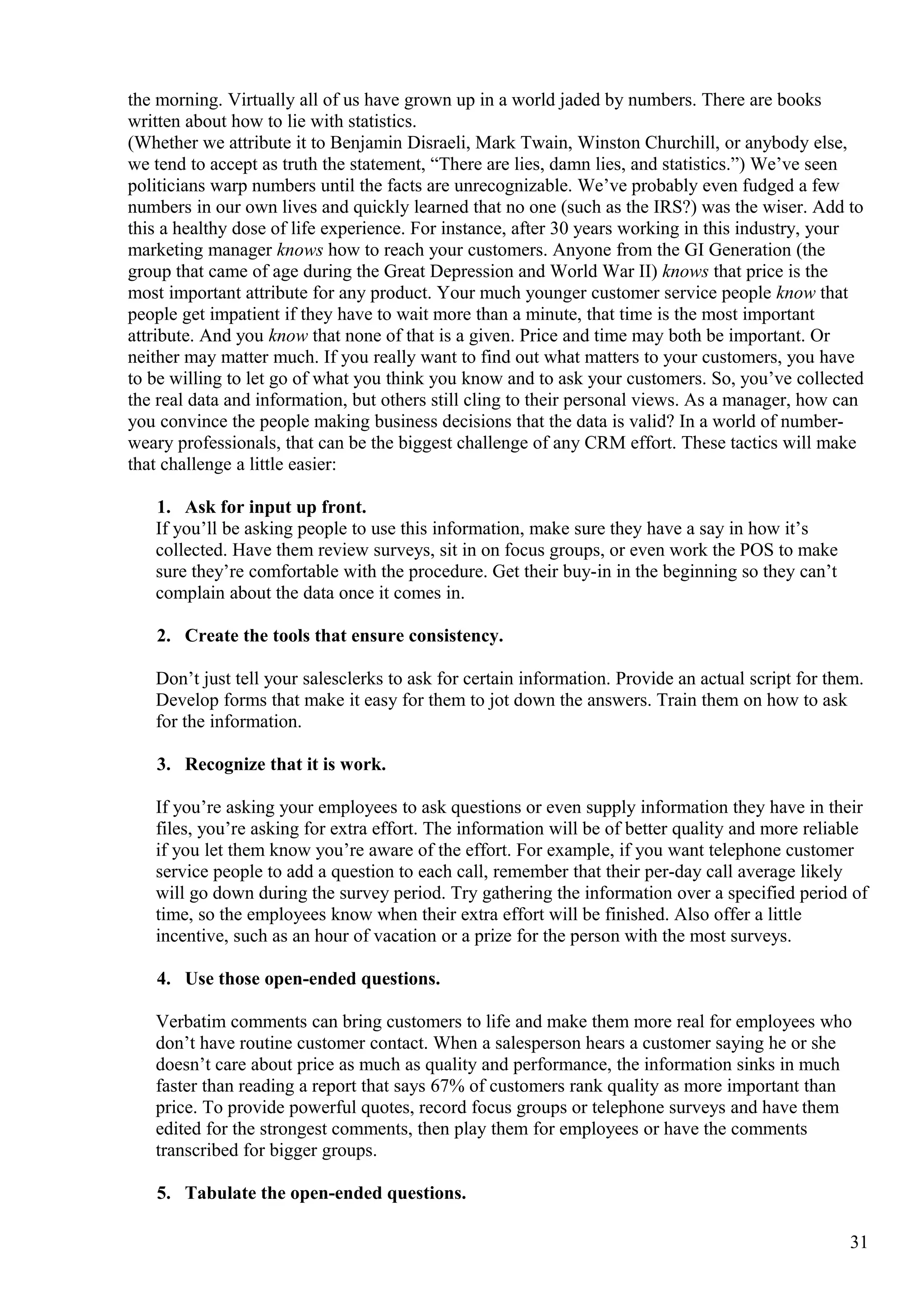

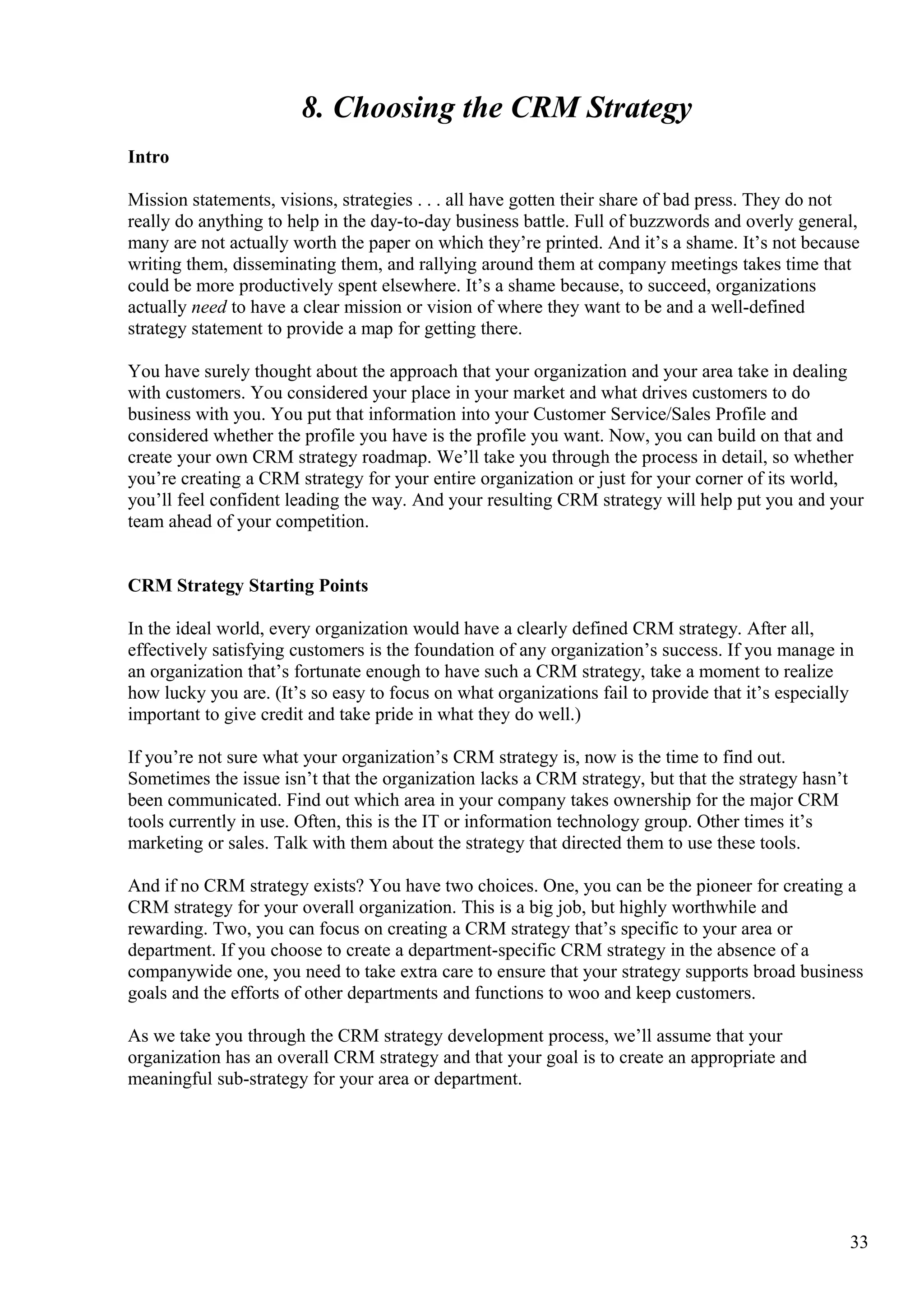
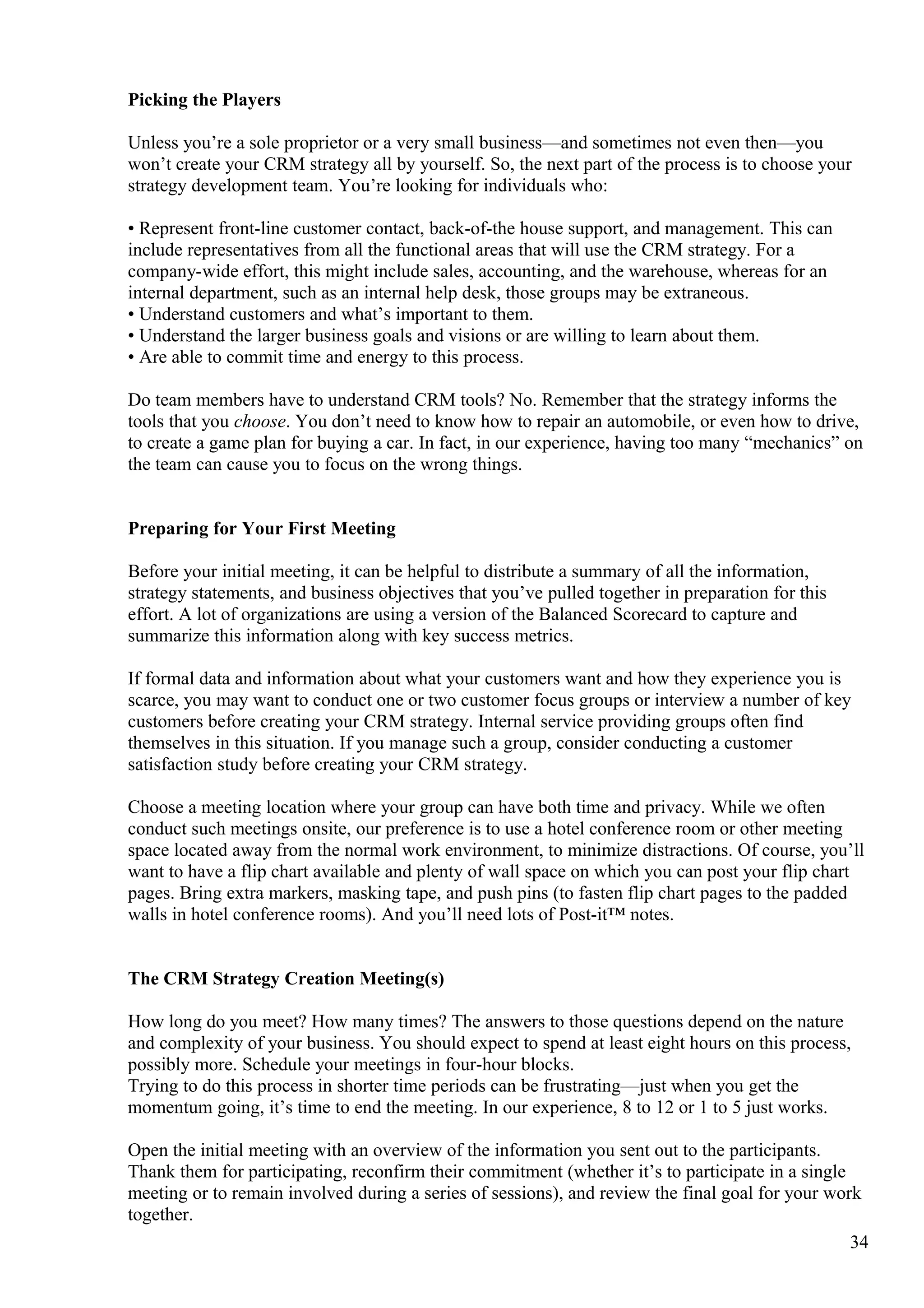
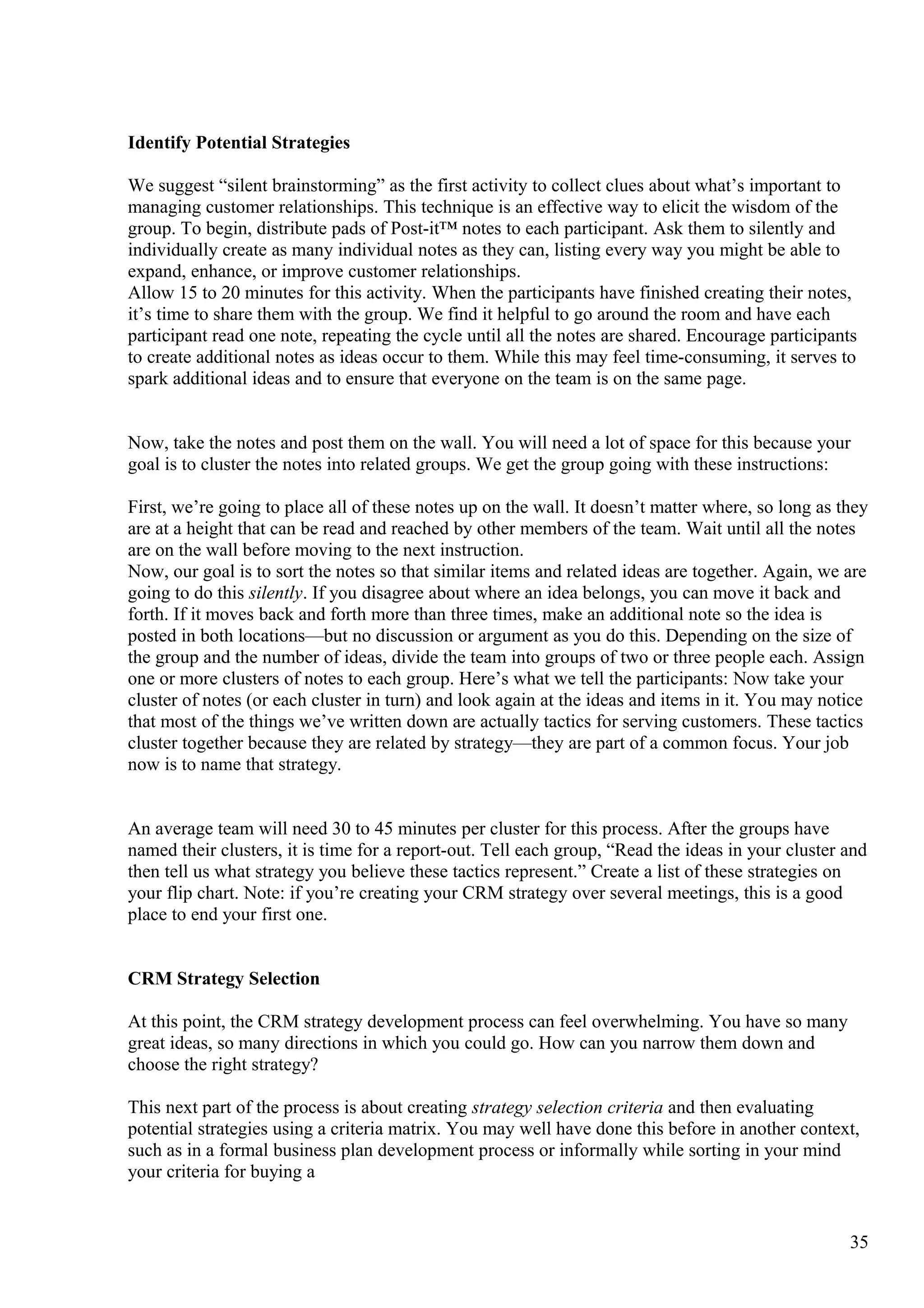
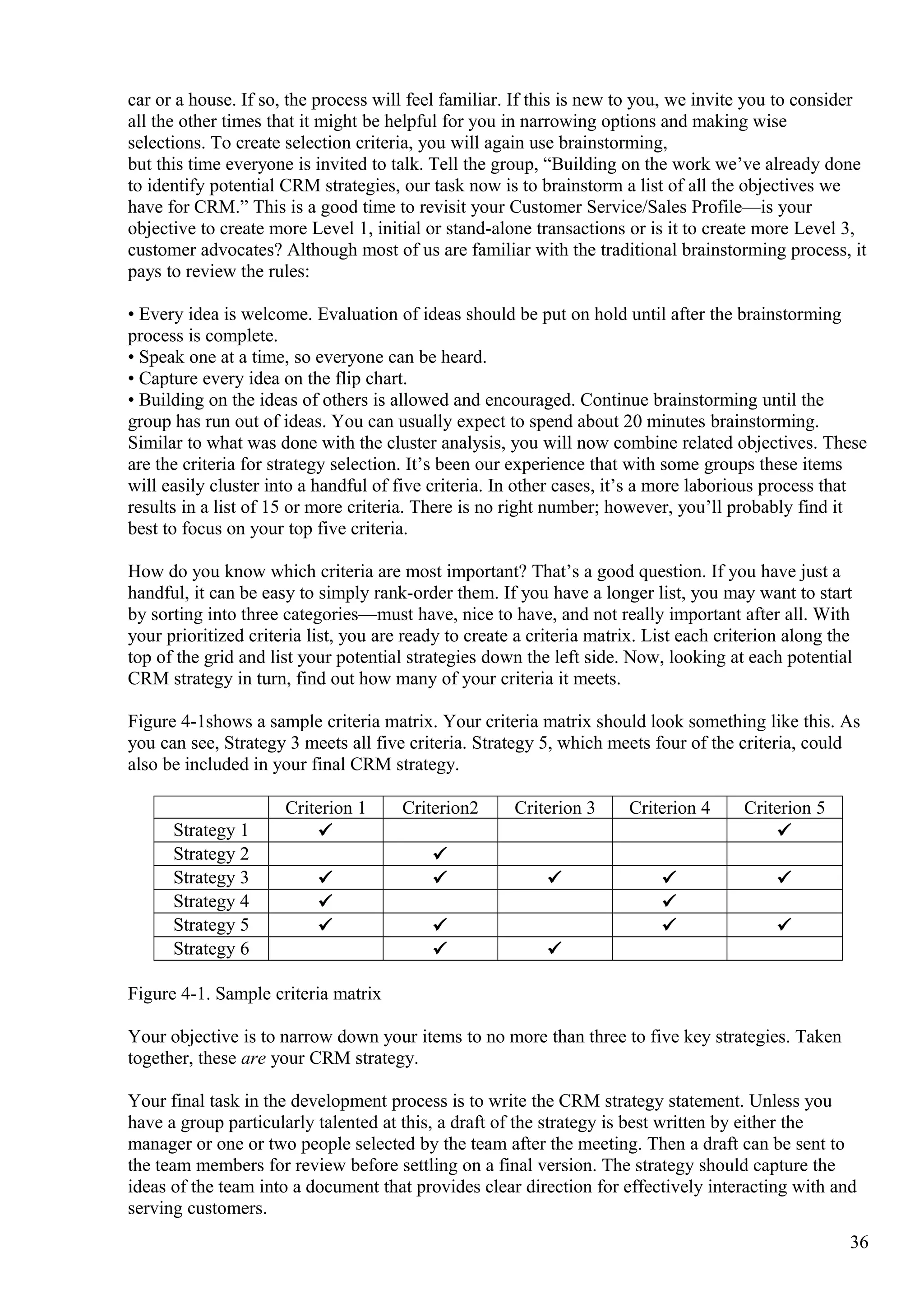

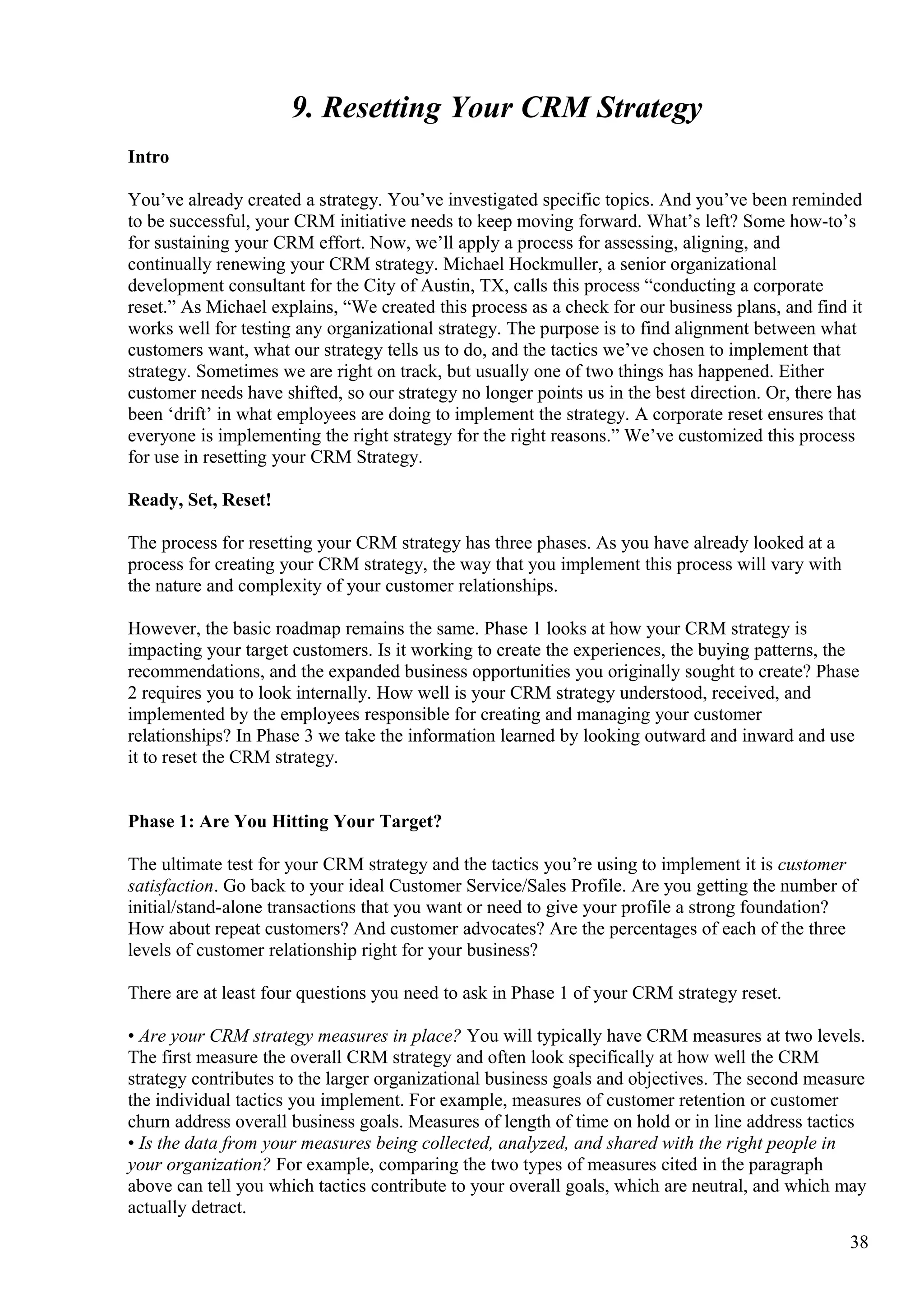

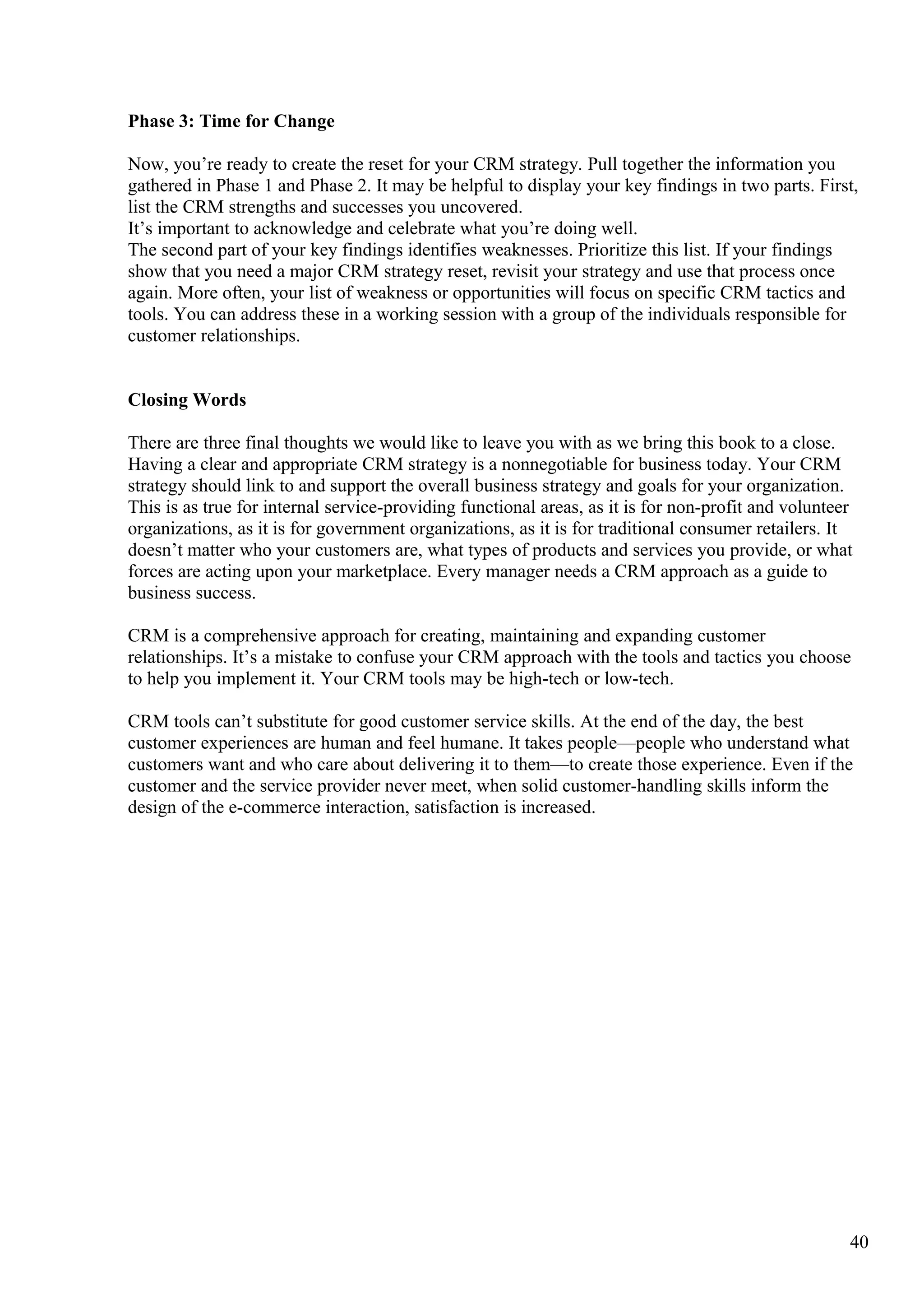
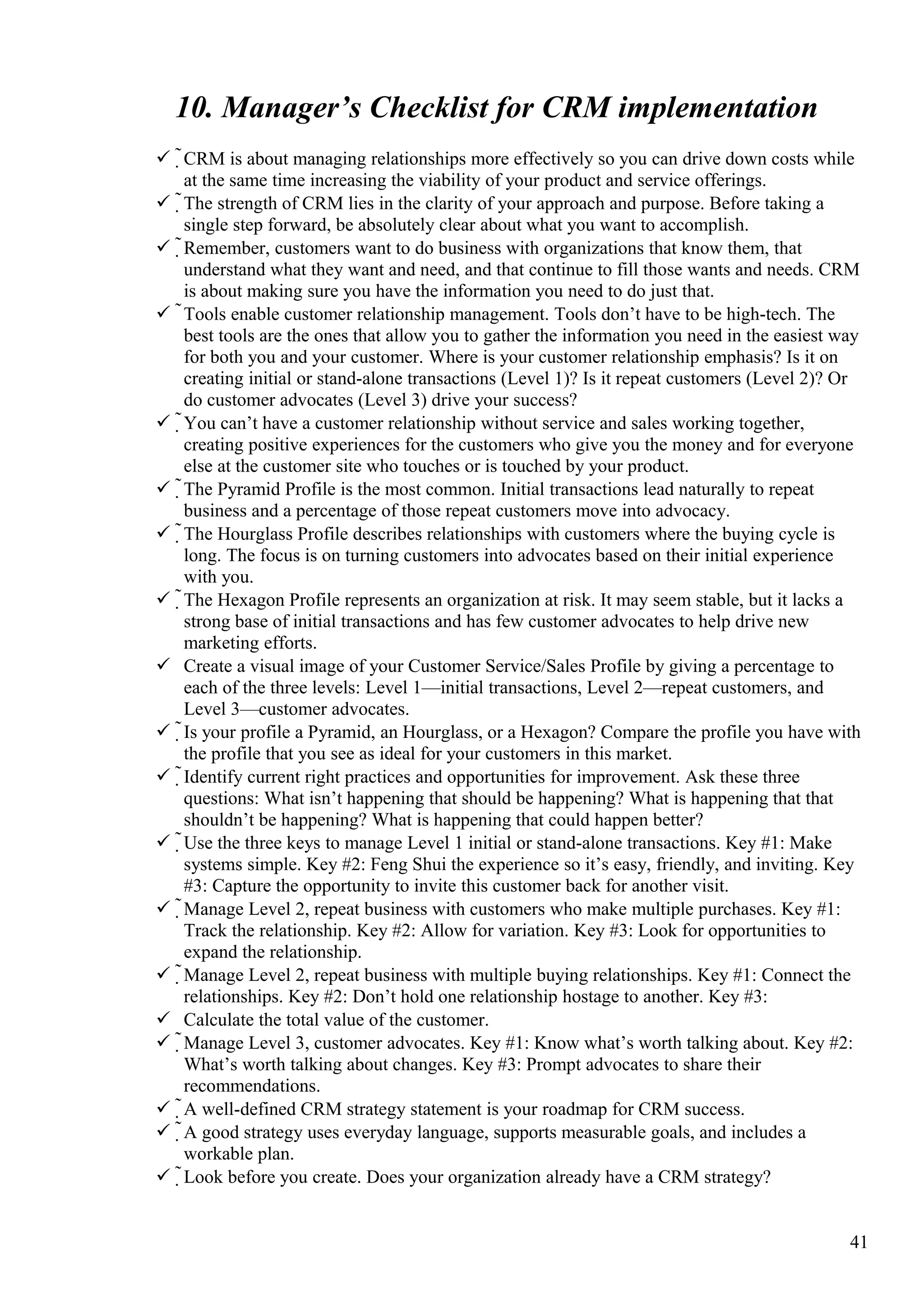
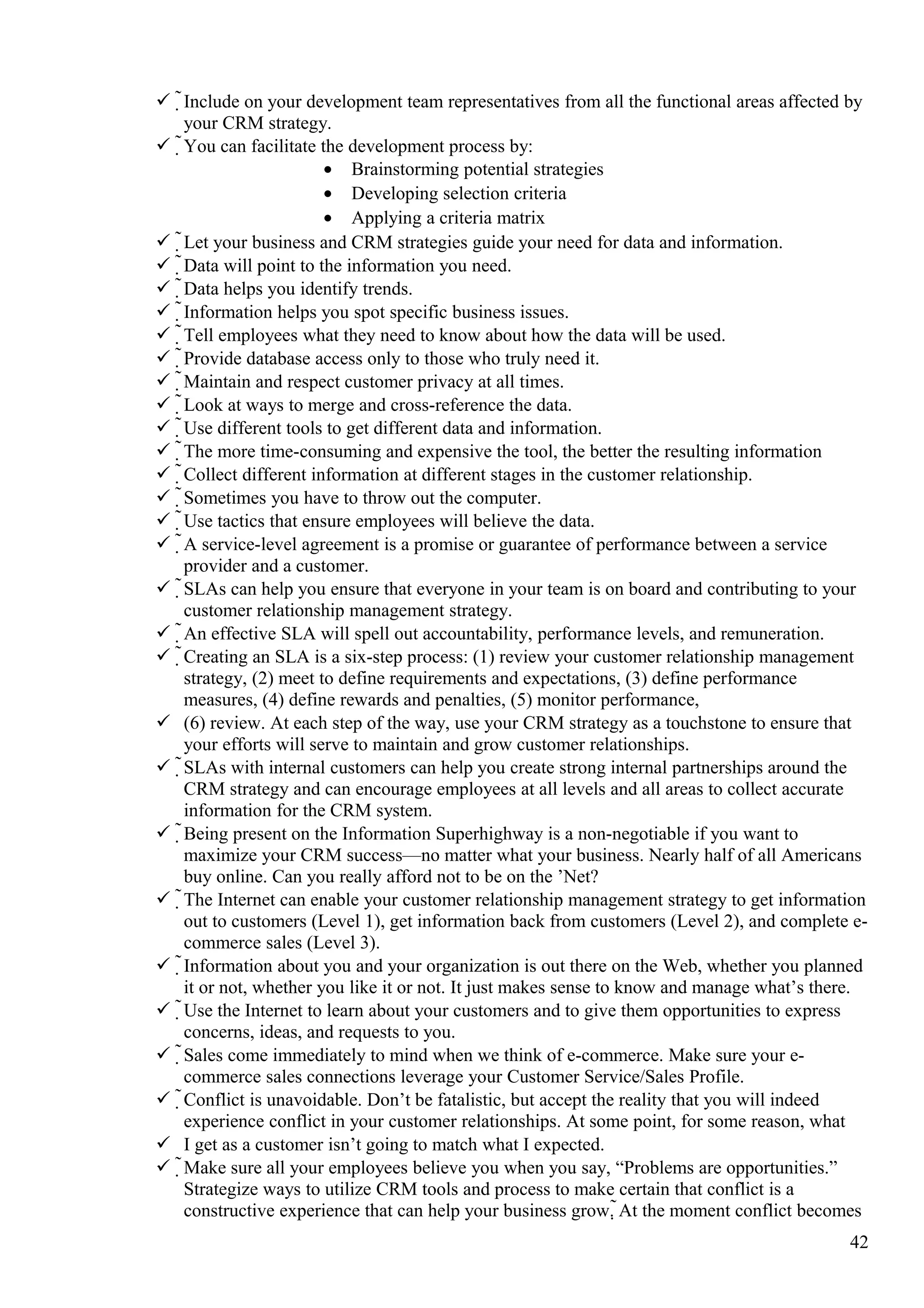
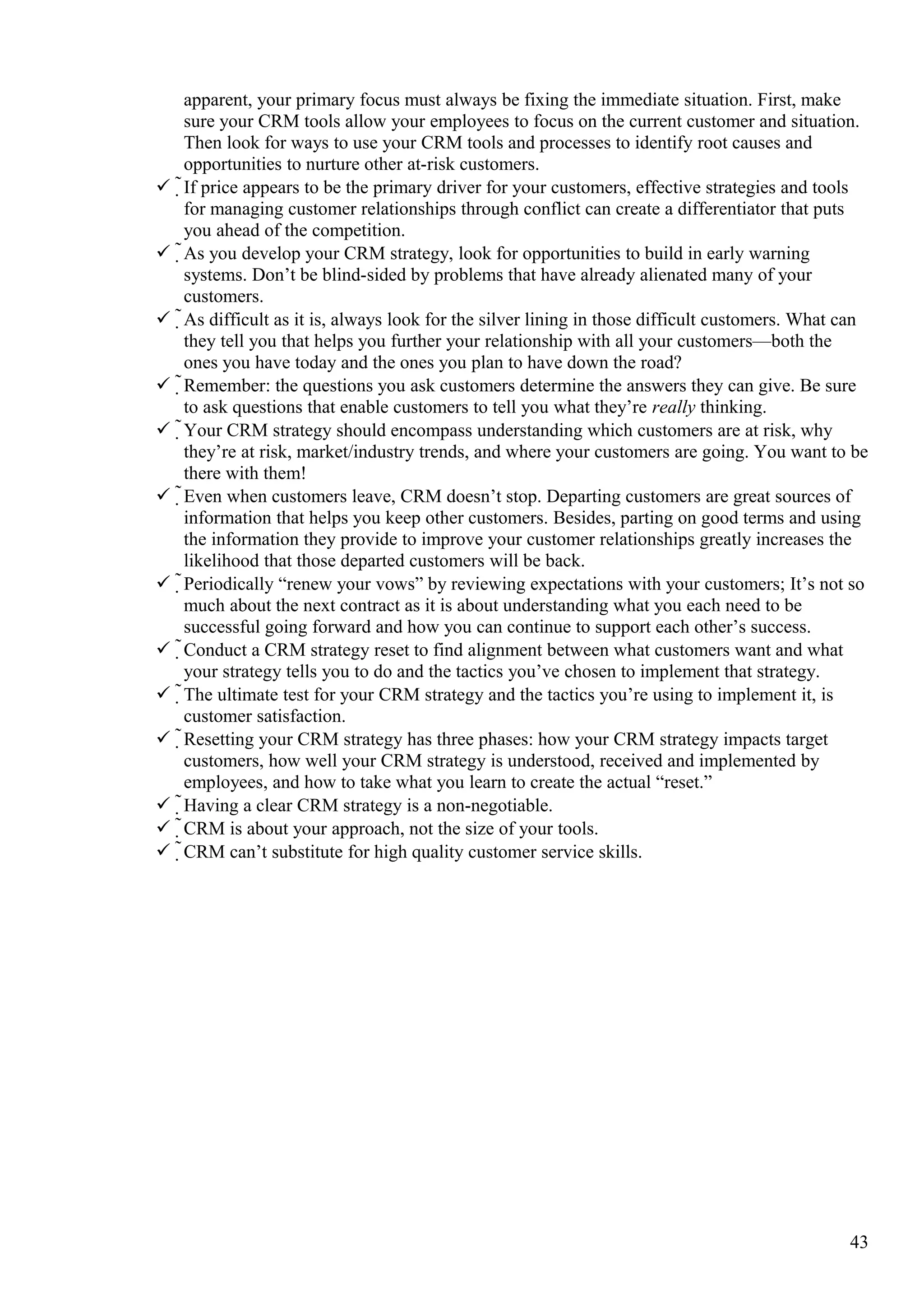


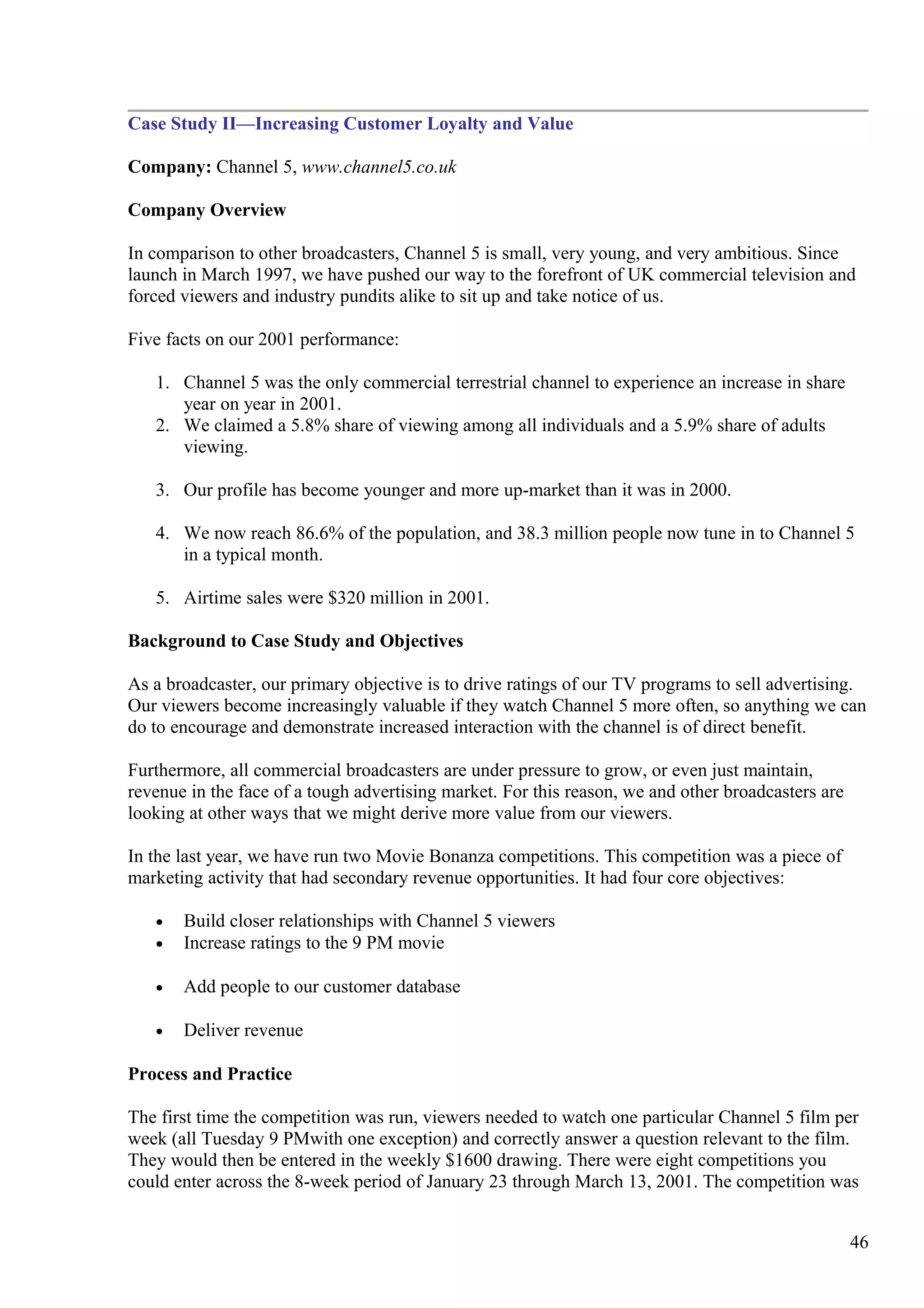
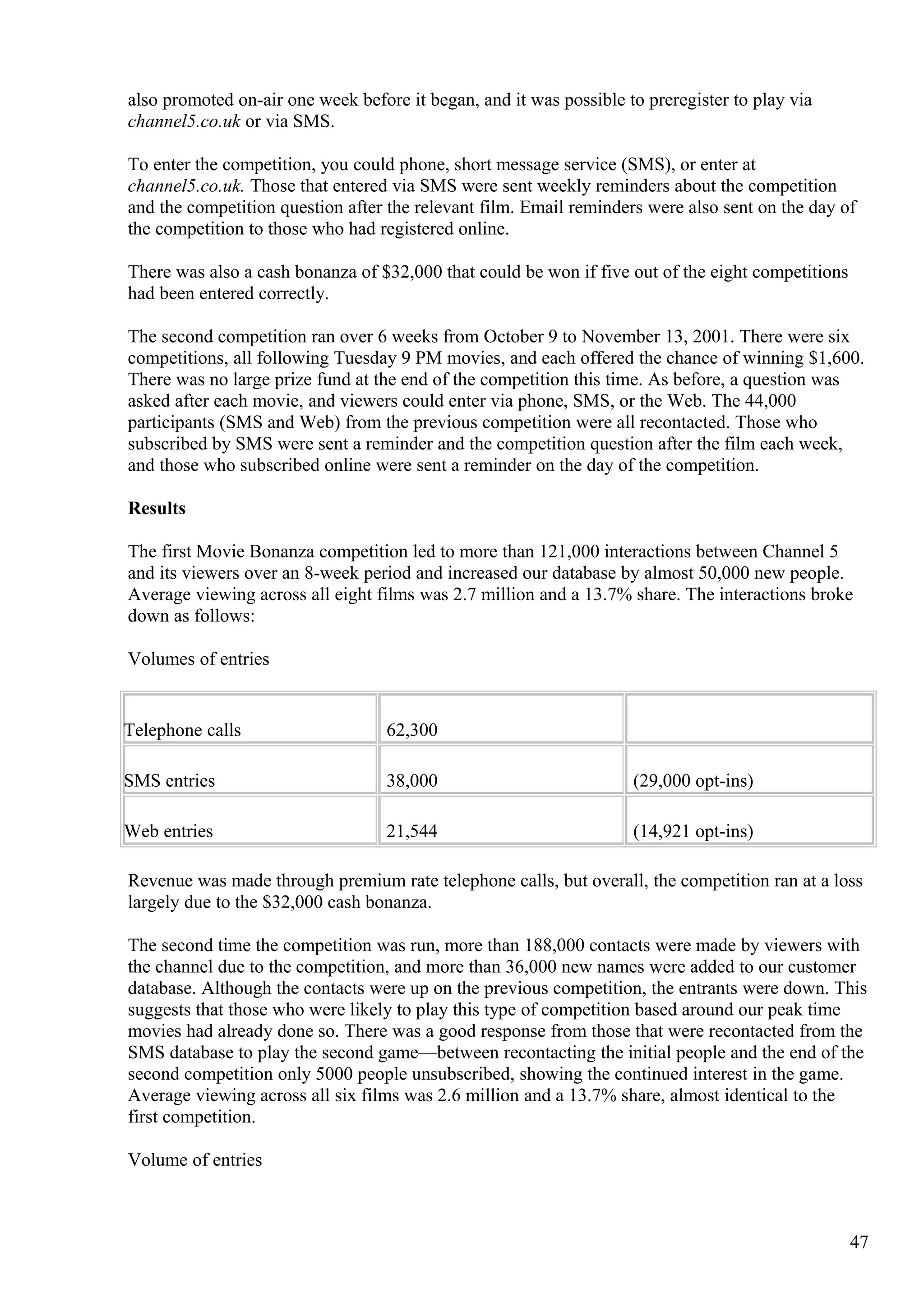
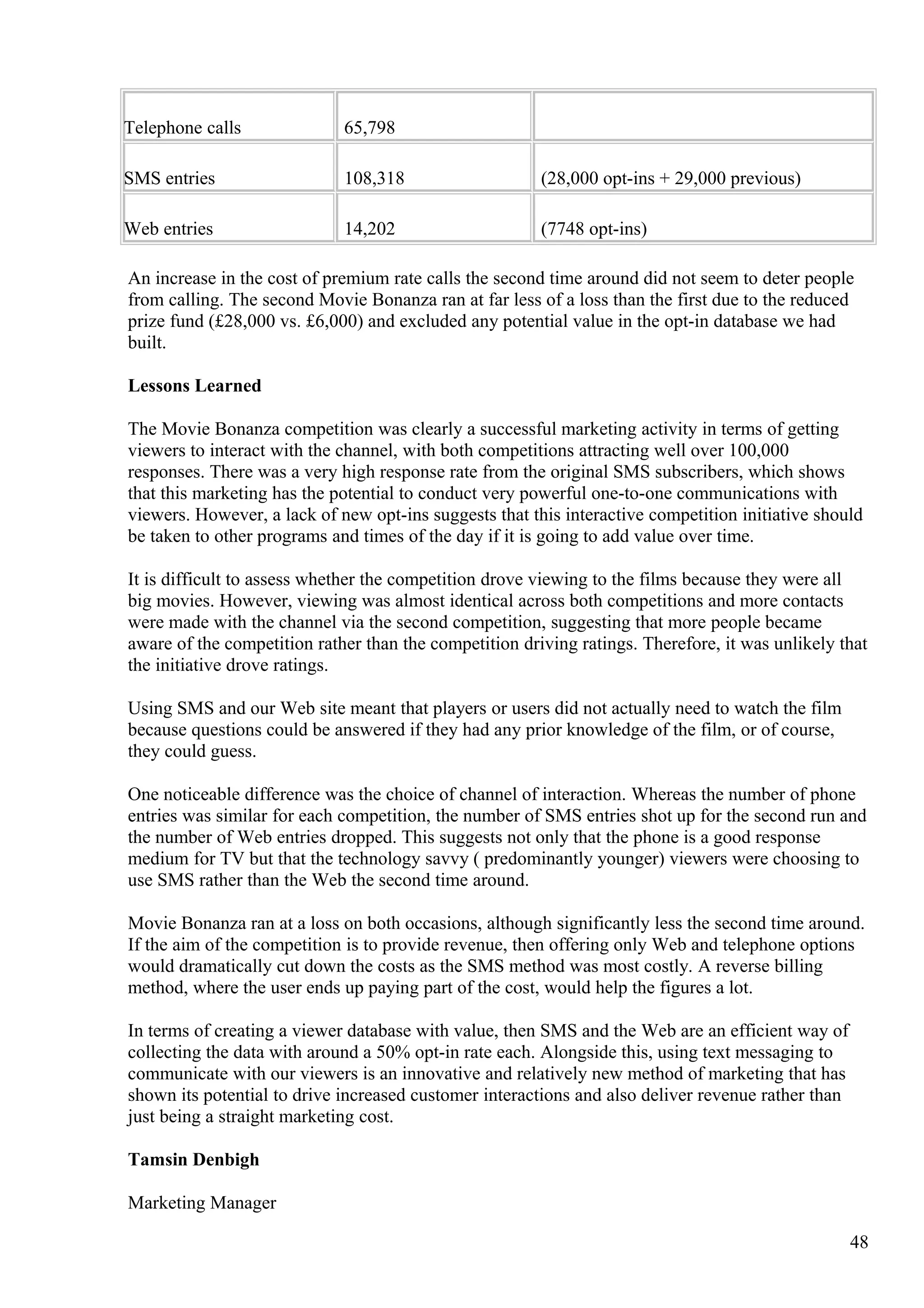
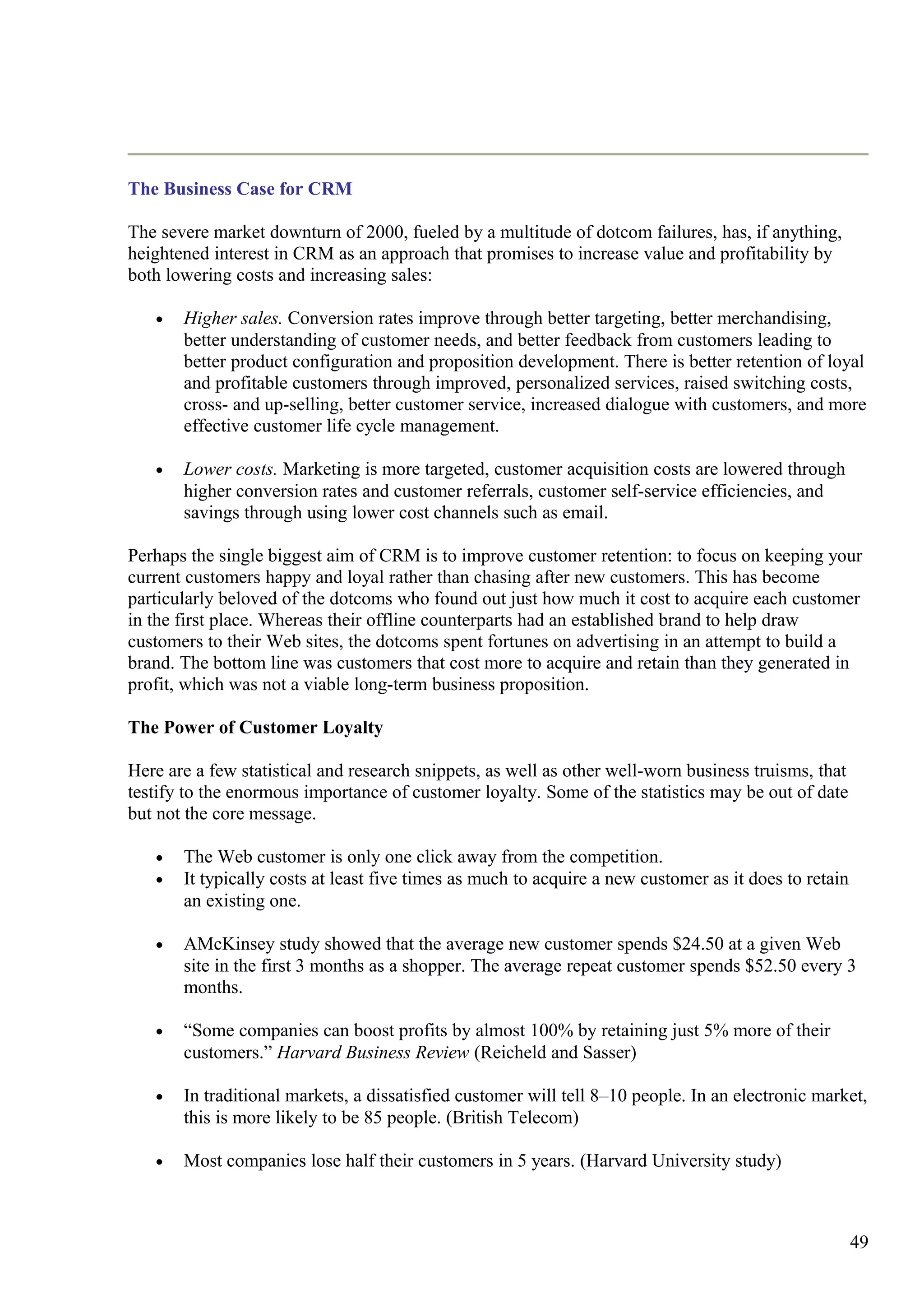
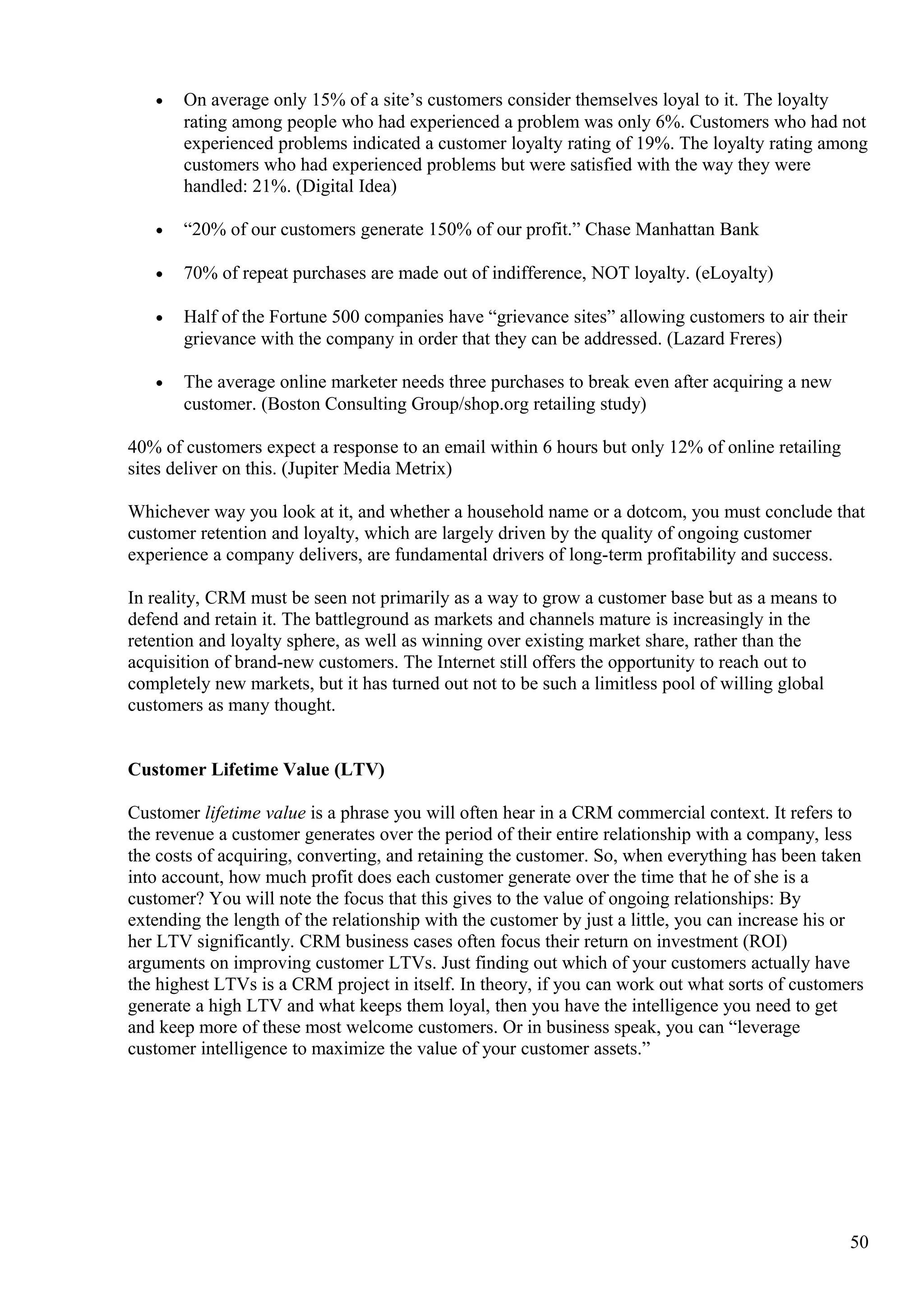
![Concise Case Studies for CRM
I. AMAZON.COM
When you try to buy something from Amazon.com, you can see the following statement;
“Customers who bought this item also bought these items.” If you have any previous purchasing
experience with Amazon.com, the company will support a ‘Welcome to Recommendations’ Web
page. He personalized Web pages, vast selection of products, and low price lead customer loyalty
and long-term relationship of Amazon.com. More than 20 million people have purchased at
Amazon.com. The percentage of returning customers is about 15 to 25 ercent , compared with 3 to
5 percent for other ebusiness retailers.
Amazon.com assembles large amounts of information on individual customer buying habits and
personal information. Based on a customer’s previous purchases and Web surfing information,
Amazon.com recommends books, CDs, and other products. Sometimes a customer buys additional
products because of this information.
Through its ‘1-Click’ system, which stores personal information such as credit card number and
shipping address, Amazon.com simplifies the customer buying process.
Like the corner merchant of old, Jeff Bezos, the founder of Amazon.com, believes the Internet
store of the future should be able to guess what the customer wants to buy before the customer
knows. He wants to make Amazon.com Web site that smart and that personal. [Newell, 2000]
II. DELL
Since 1983, Dell Computers has operated on two simple business ideas: sell computers direct to
individual customers and manufacture computers based on the customer’s order. The individual
customer can make his/her system unique and obtain it directly from the company.
If the system has a problem, the user can contact the Dell Web site directly and get personalized
services by using the customer system service tag number, which is on the side of the computer.
These personalized services also provide related information and make software downloads
available. In addition, a call center provides technical assistance at multiple levels. If the first level
technician cannot resolve the problem, the customer is routed to a more skilled contact.
Dell is organized by customer segment, such as education, government, small business, large
business, and home, instead of by product lines.
Dell developed ‘Premier Dell.com’ that covers entire processes of computer ownership:
purchasing, asset management, and product support. Premier pages support online purchasing,
standard management, price quotes, and order management.
III. VOLKSWAGEN
Volkswagen AG is the largest automobile maker in Europe. More than 36 million vehicles carry
on their logo. Like other automobile manufacturers, the company is well informed about its
customers and heavily depends on this information. However, they lose contact with the car owner
after the first change of ownership (after an average 3.7 years). As a result, the company does not
have current information about many of its customers. [Chojnacki,
2000]
In 1988, the company started its ‘Customer Come First’ marketing strategy.
Under this strategy, all of the decision-making processes are based on the ‘Voice of Customer.’
The company carefully monitored their response to advertisements, customer expectations, and
customer satisfaction. Customer forums and focus group are used to hear the customer voice.
Volkswagen developed services such as service guarantee, the emergency plan, the mobility
guarantee, the customer club, and toll-free service phone. All advertising media are designed
51](https://image.slidesharecdn.com/crmconcept-130819155724-phpapp01/75/CRM-concept-and-trends-51-2048.jpg)
![toward two-way communication. This allows the company to obtain useful information such as
lifestyle, demographic, and behavioral data.
The company maintains a central database to provide club card, bonus point programs, club shops,
and Volkswagen magazine. Every contact points with a customer gives the company more
information about the customer, so the company can constantly improve the quality and value of
the customer database.
IV. WELLS FARGO
Banking differs from other industries because the average relationship between customer and bank
lasts much longer on the. For example, in the auto industry, the relationship between the customer
and the company is becoming weaker over time. You don’t need to contact the car dealer or
manufacturer once a week or a month. You can change your oil or maintain your car with different
service station. However, once you open your account in a specific bank, your relationship or
dependence to the bank increases. You may write checks more frequently, have direct deposit,
transfer money, pay bills, and withdraw money. The bank contacts you regularly by sending you
your monthly statement. You can obtain credit card or investment opportunities from the bank.
Wells Fargo is one of the leading banks which transforms these relationships into opportunities. It
was the first bank which started 24-hour phone banking service and opened branches in the local
supermarket and Starbucks coffee house. Wells Fargo always tried to provide more touch points to
its customers and a one-stop shopping environment.
Since 1993, Wells Fargo tried to integrate all of its back-end customer information into its
Customer Relationship System. Previously, customer information was managed by several
different backend system. Software was organized by account number, with each backend system
using its own numbering system. Customer service agents found it difficult to integrate customer
information when they received a request to transfer from one account to another. They had to log
on to several different system to obtain the information and do the transactions requested. In the
new system, the service agent can access all required information by using the customer’s social
security number instead of the account numbers. These changes increase convenience for both
customers and service agents.
Wells Fargo provides Internet banking. It built a Web site as a new contact point in 1995 and
provided advanced technologies to its customer. By using online banking, customers can manage
their account anytime and anywhere. Online banking also saves operating cost of the bank
branches.
In the future, Wells Fargo will try to build online customer communities (similar to America
Online or the World Wide Web) in its banking service by responding to customers’ needs with
new technologies.[Seybold, 2000] By providing more power to manage their account and money,
Wells Fargo expects to increase ustomer loyalty and obtain long term mutual benefits with its
customers.
V. Midwest Community Hospital (not its real name)
In the early 1990s Midwest Community Hospital (not its real name) recognized that managed care
plans dictated where patients went for their first hospitalization. However, it was the quality of
caring during their patient experience that determined whether or not individuals and families
would choose MCH for their next healthcare need or move heaven and earth to have their managed
care plan send them somewhere else. So, a “Guest Relations” program was launched to increase
patient satisfaction and loyalty. It involved all patient contact areas, from the security personnel
who patrolled the parking ramp, to the nurses and aides, to the facilities management team, to the
kitchen and cafeteria staff. It forgot finance.
Accounting staff, accustomed to dealing with impersonal policies and government-regulated DRG
(diagnostic related groups) payment guidelines, took a clinical and impersonal approach to billing
52](https://image.slidesharecdn.com/crmconcept-130819155724-phpapp01/75/CRM-concept-and-trends-52-2048.jpg)
